How can you tell if your kombucha has mold? And can you save a moldy SCOBY? Diving into your worst kombucha nightmare (and how to prevent it) here!
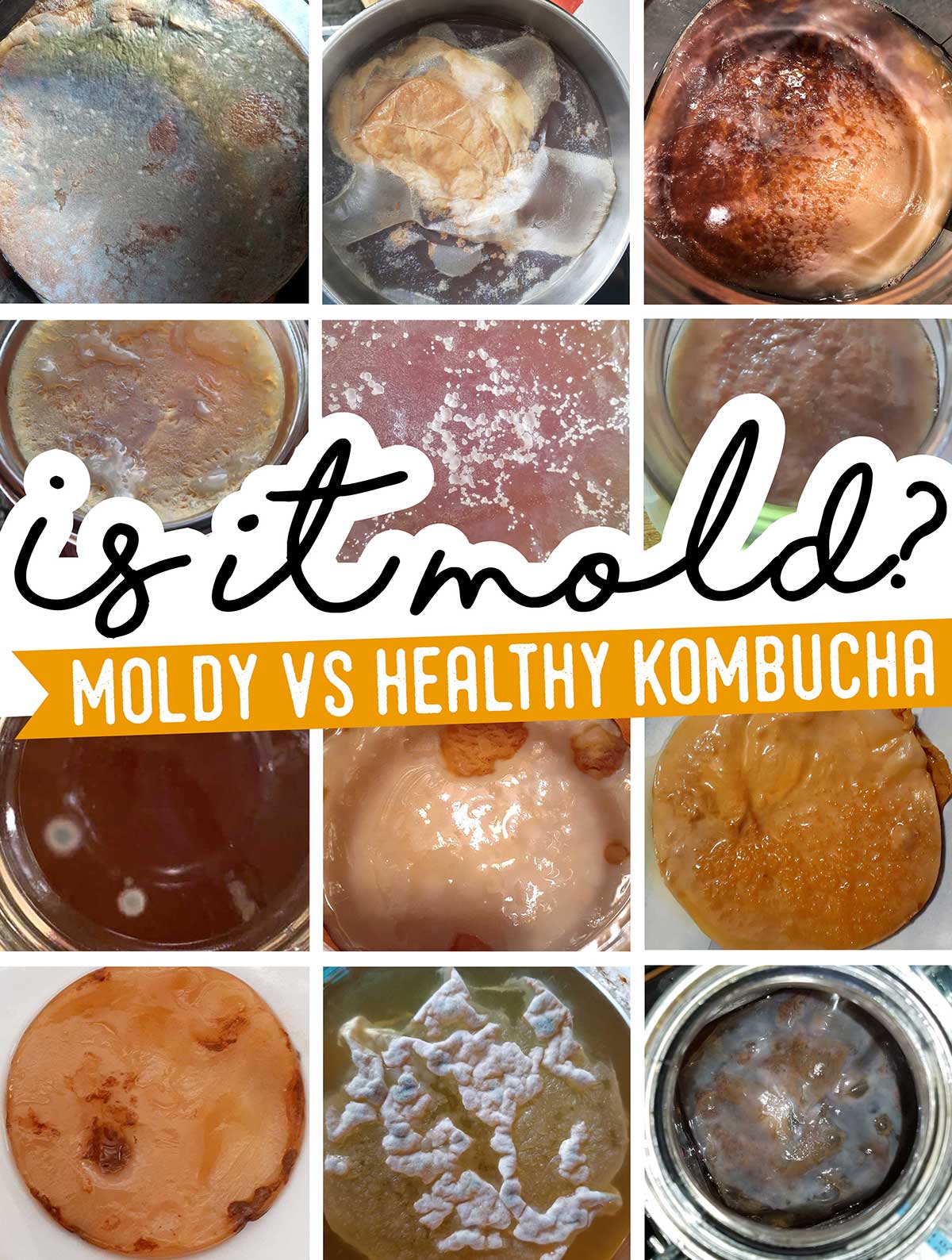
It’s every kombucha brewers worst fear…mold. But is it really as scary and world shattering as people seem to believe? No.
The thing is, kombucha mold is totally avoidable, and the chances or contracting mold are quite low if you’re brewing kombucha properly.
What is kombucha mold?
Kombucha mold is simply an overgrowth of bad bacteria or fungus. It isn’t much different than the mold that might grow on an old loaf of bread.
And while you shouldn’t drink any kombucha that has been in contact with mold (just as you wouldn’t eat that moldy bread), it’s not the end of the world!
What does kombucha mold look like
Though the chances are low, if mold is going to happen it will likely be in the first fermentation, when the kombucha acidity isn’t high enough to fend off the bad bugs. Once kombucha is bottled in the second fermentation, the acidity of the brew should prevent mold from growing.
While there are many different strains of mold that can grow – each with their own unique appearance – they usually have a few specific traits:
- Fuzzy or dry appearance
- Circular shape
- Colors range, but may be white, green, black, or blue
- On the surface of the kombucha (most mold needs air to survive)
Here are a few photos of kombucha mold for your reference. (Have a moldy SCOBY photo and want to include it in this gallery to help more people ID potentially moldy kombucha? Email me!)
(If your kombucha looks odd but it doesn’t look like mold, you could have kahm yeast.)
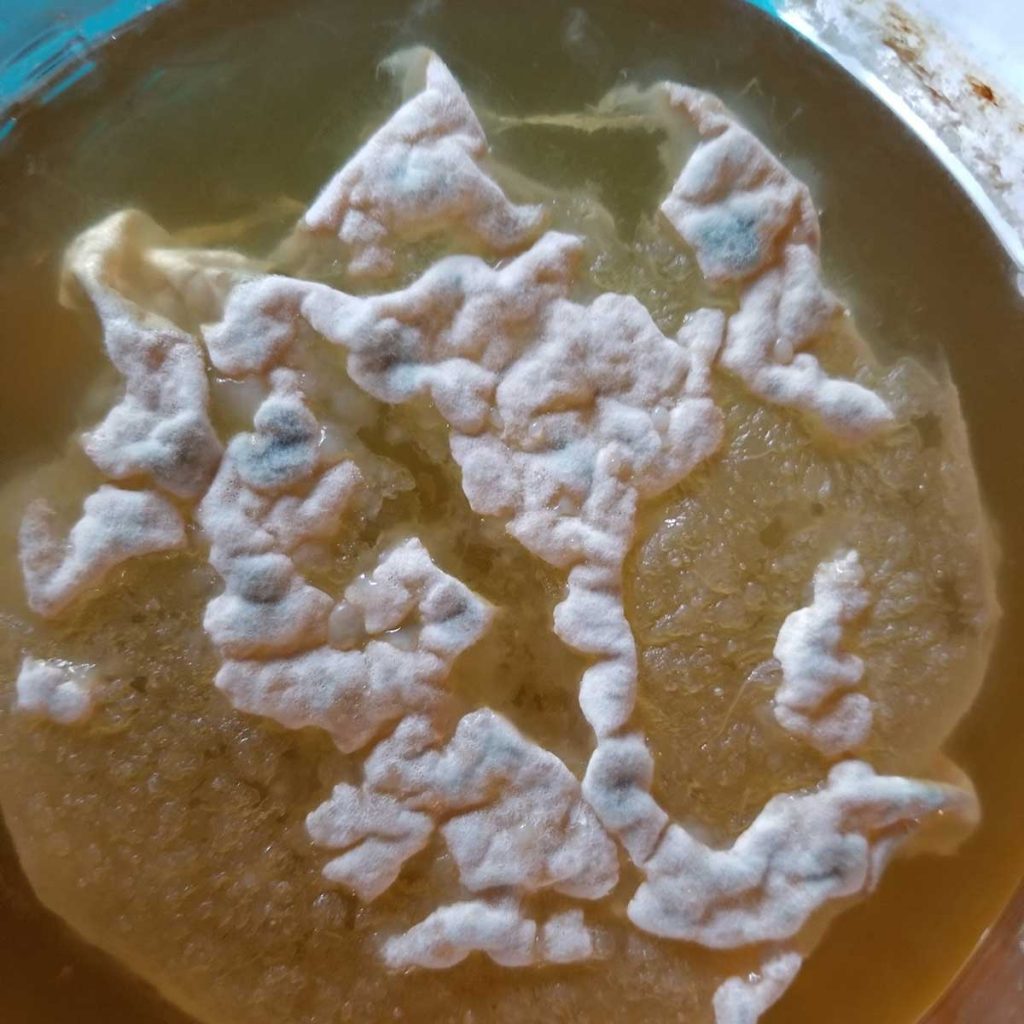
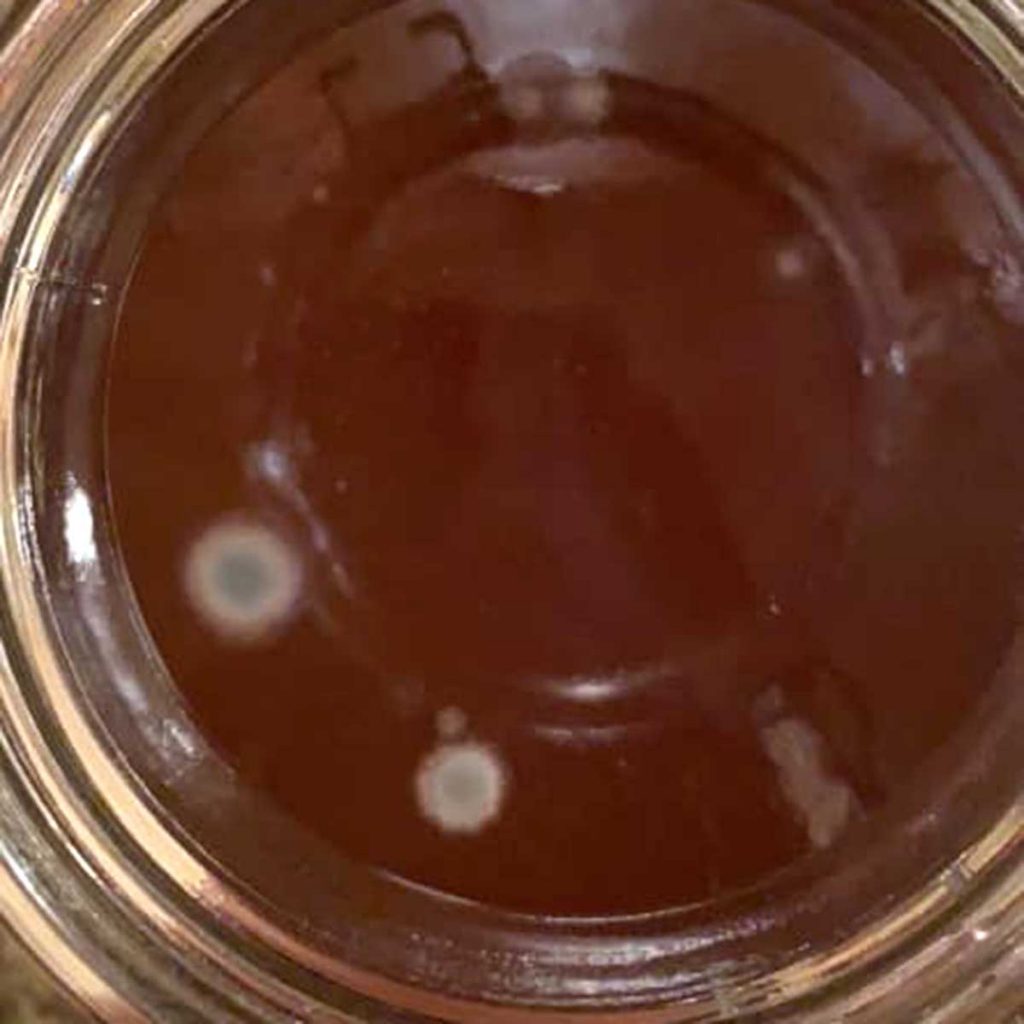
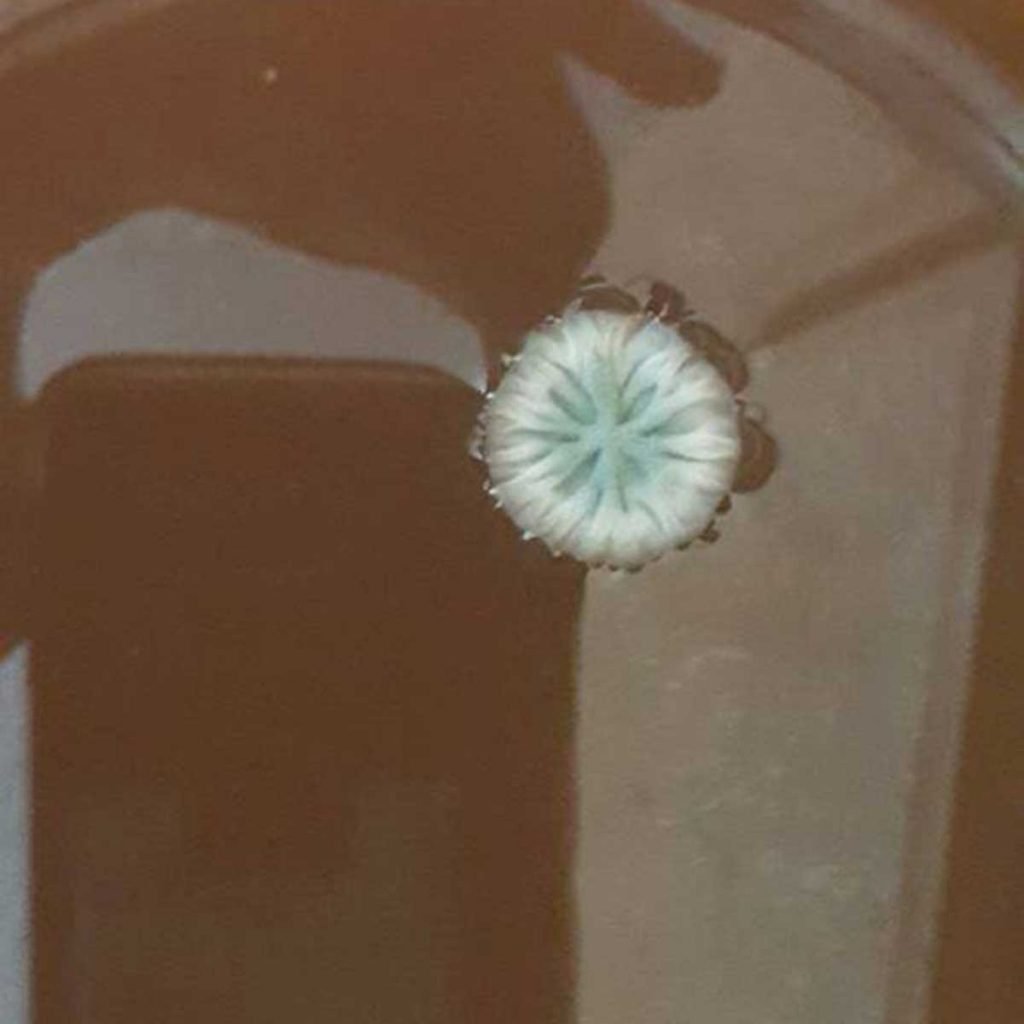
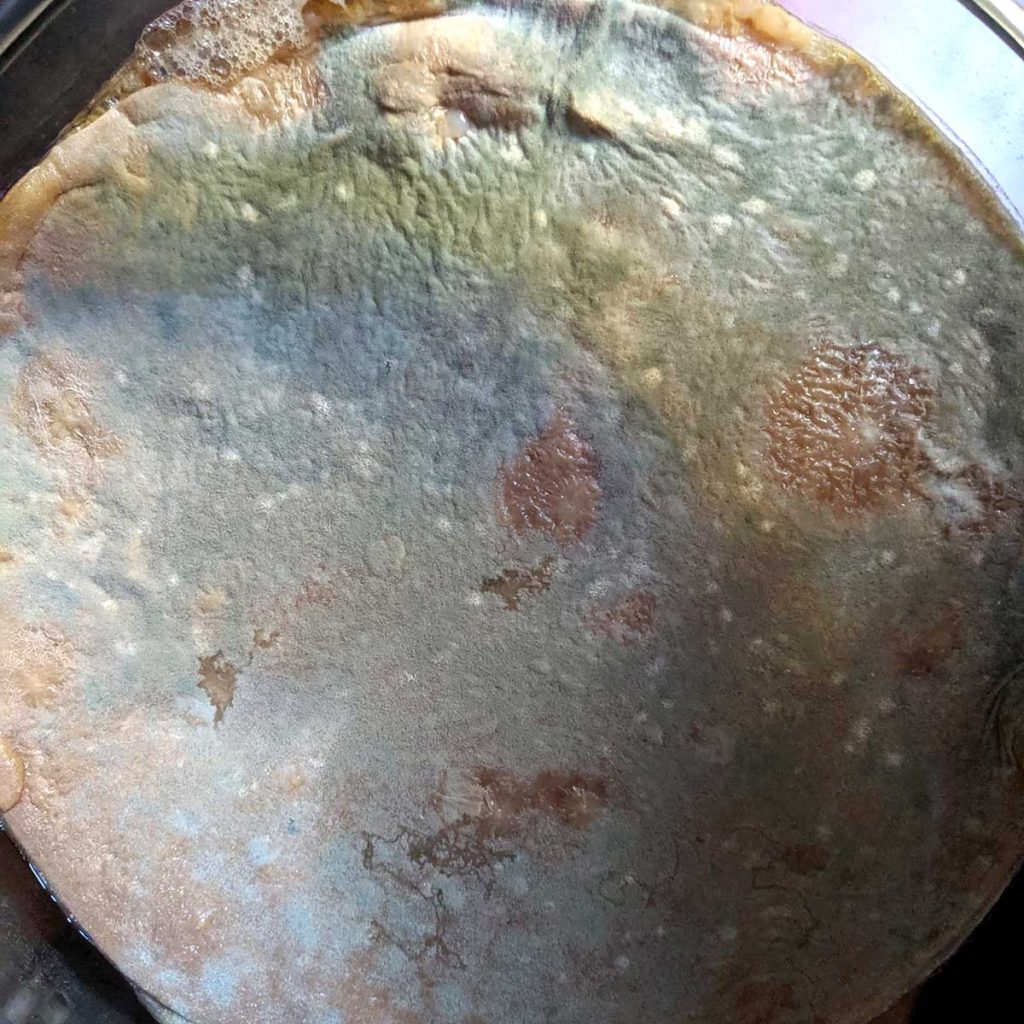
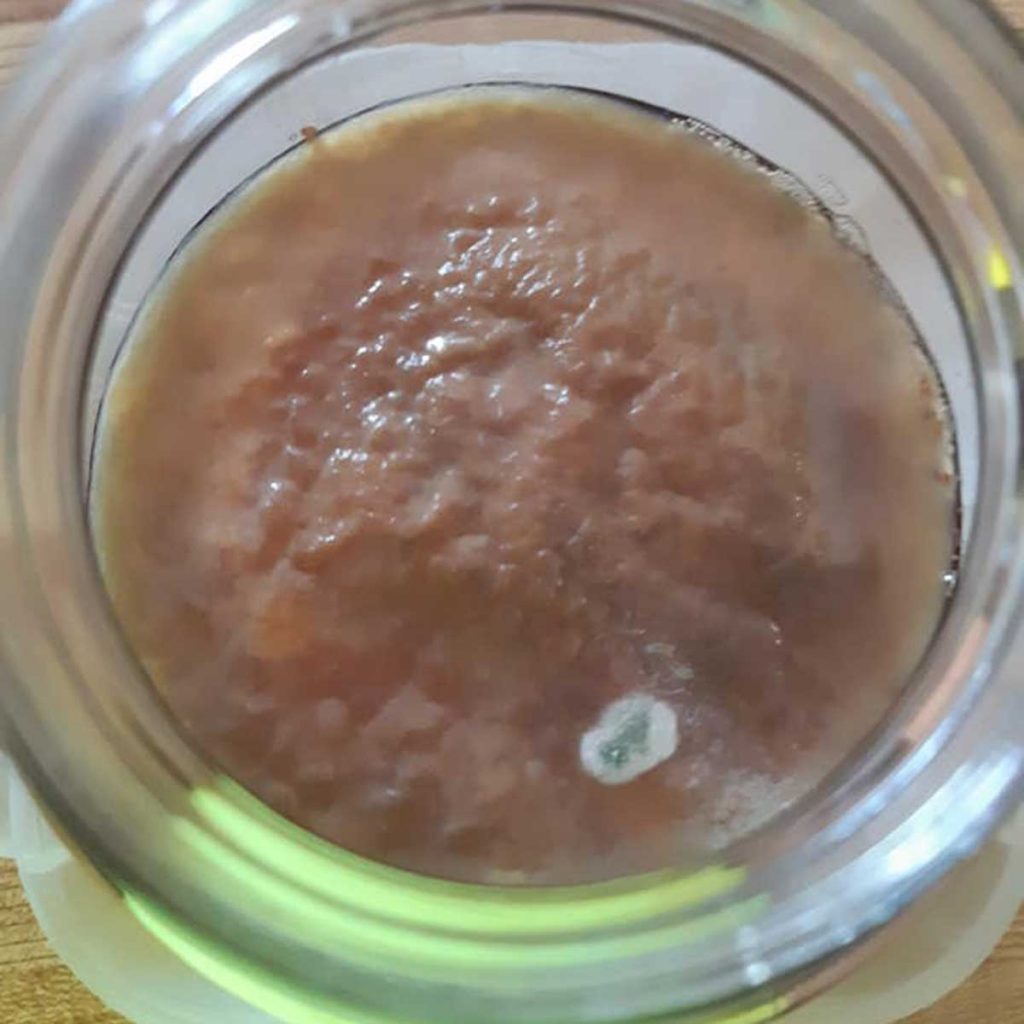
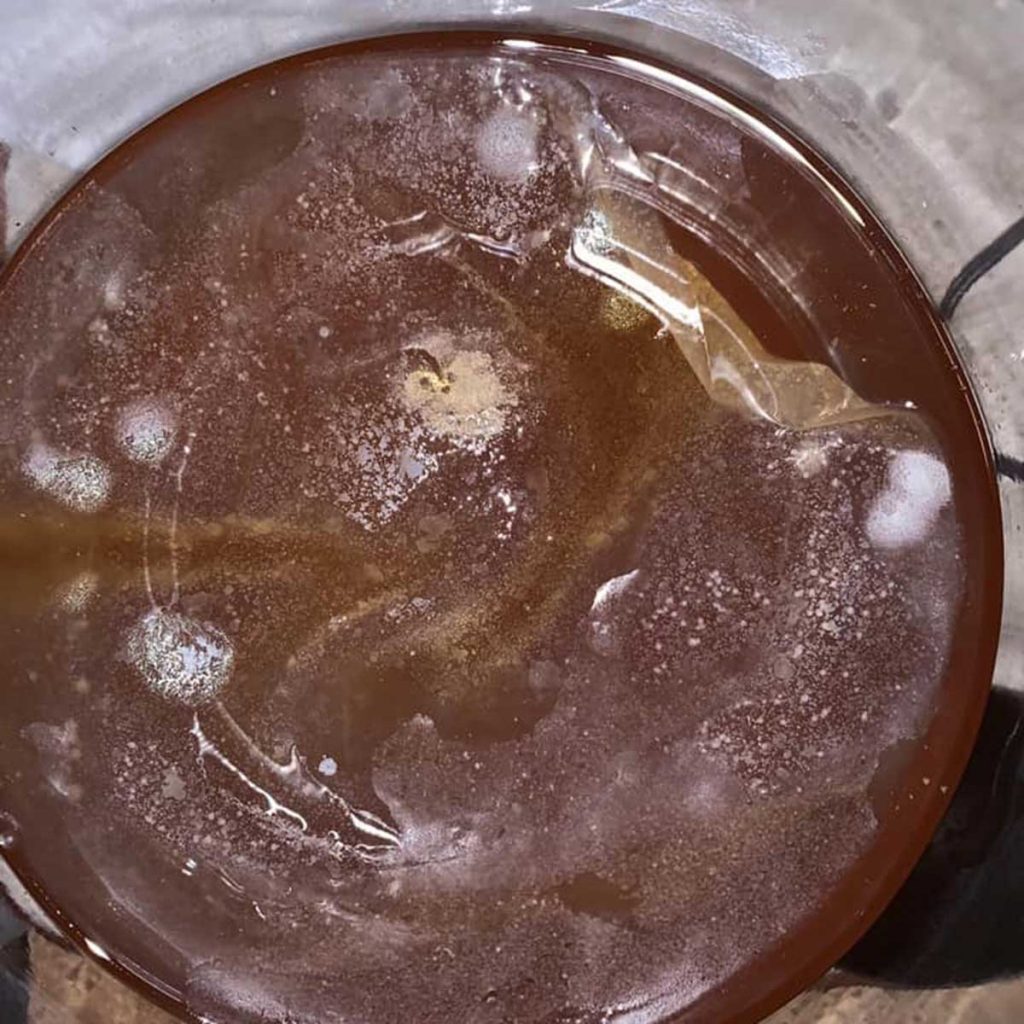
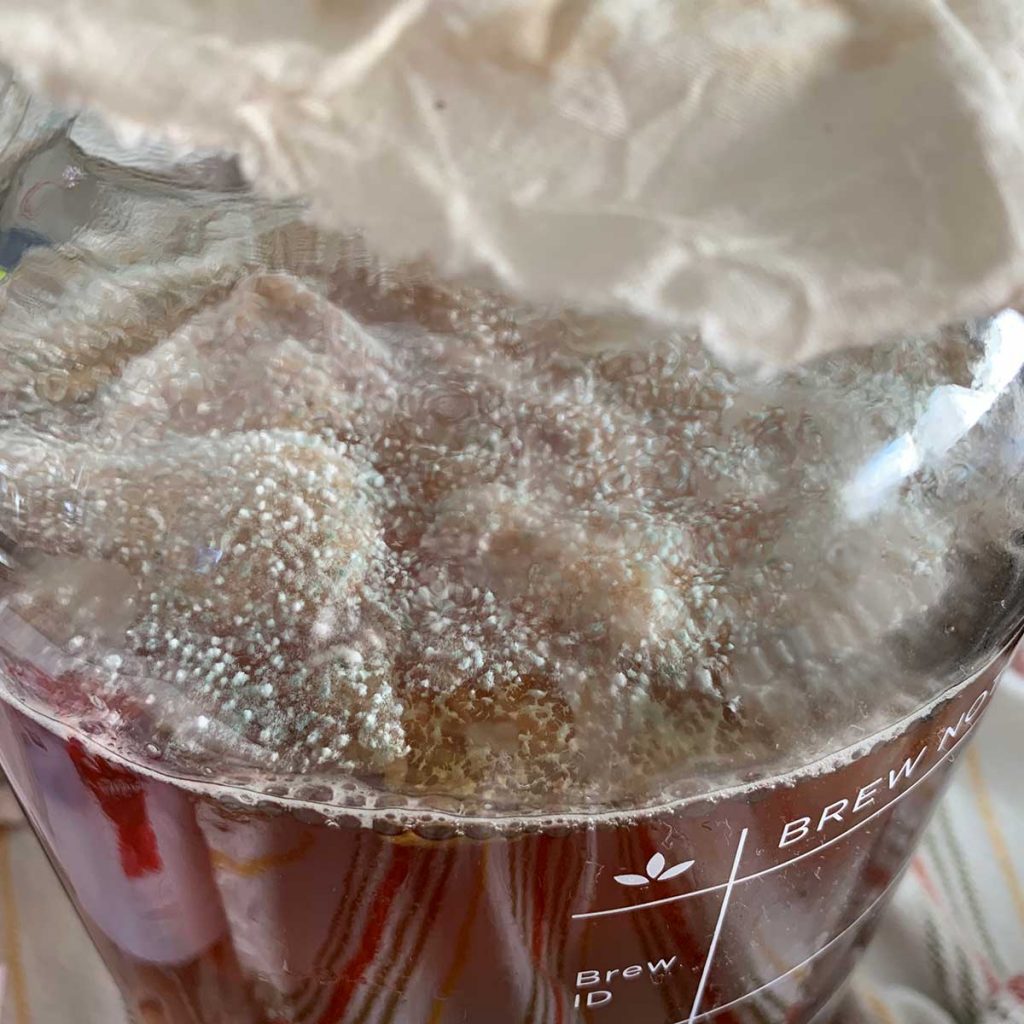
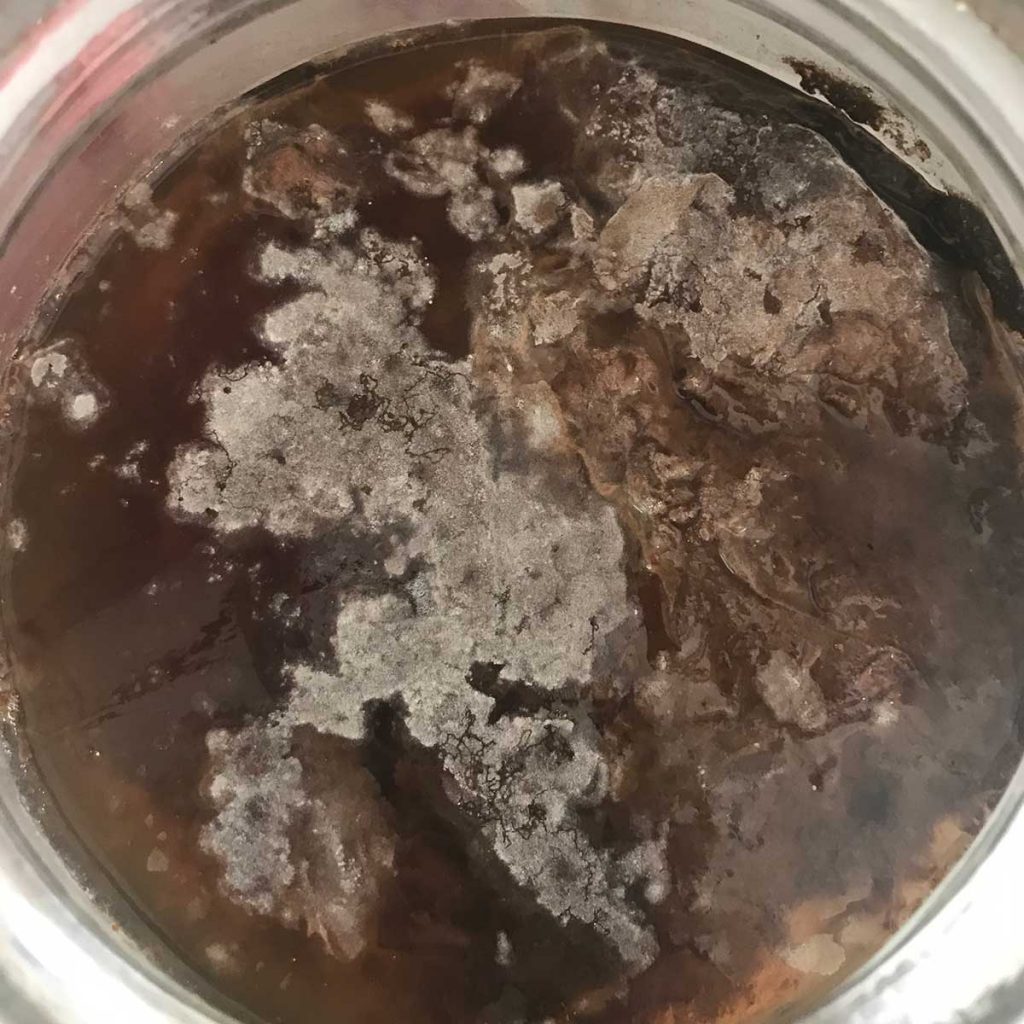
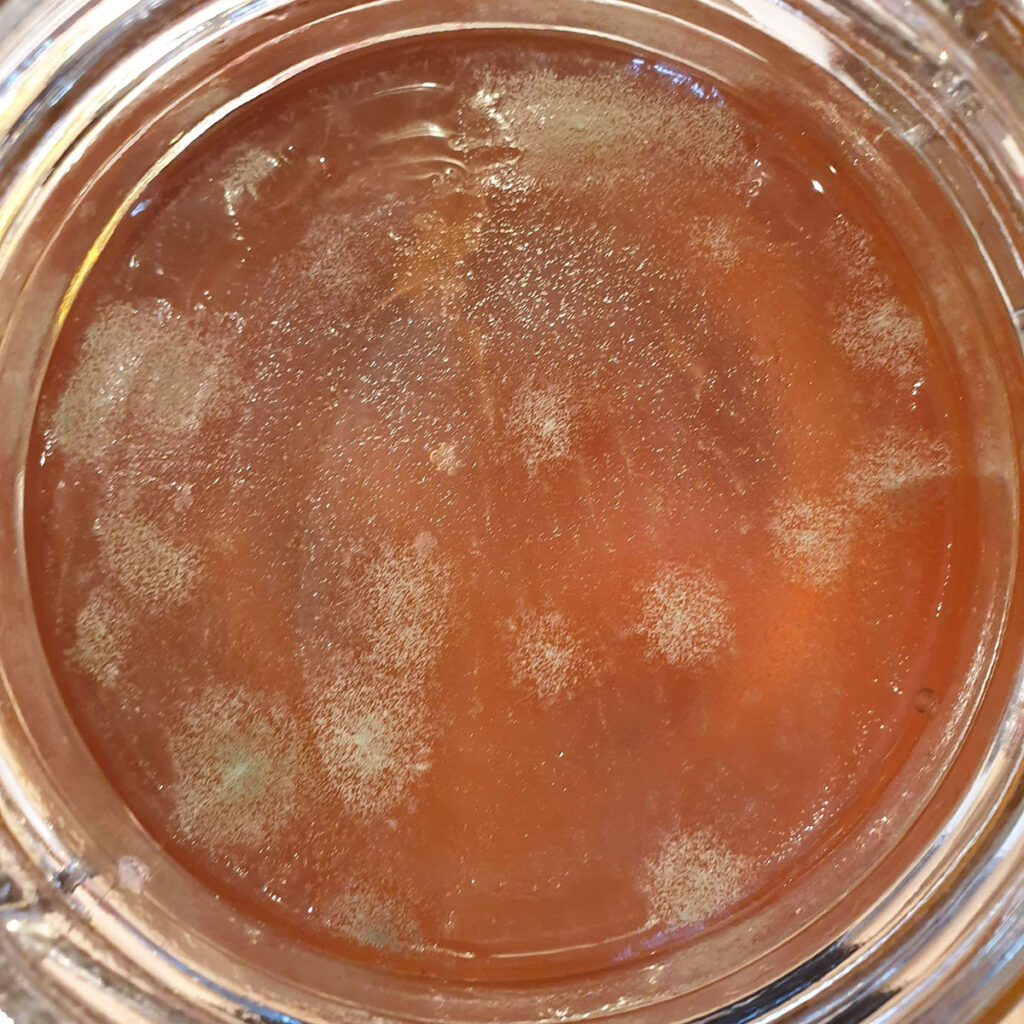
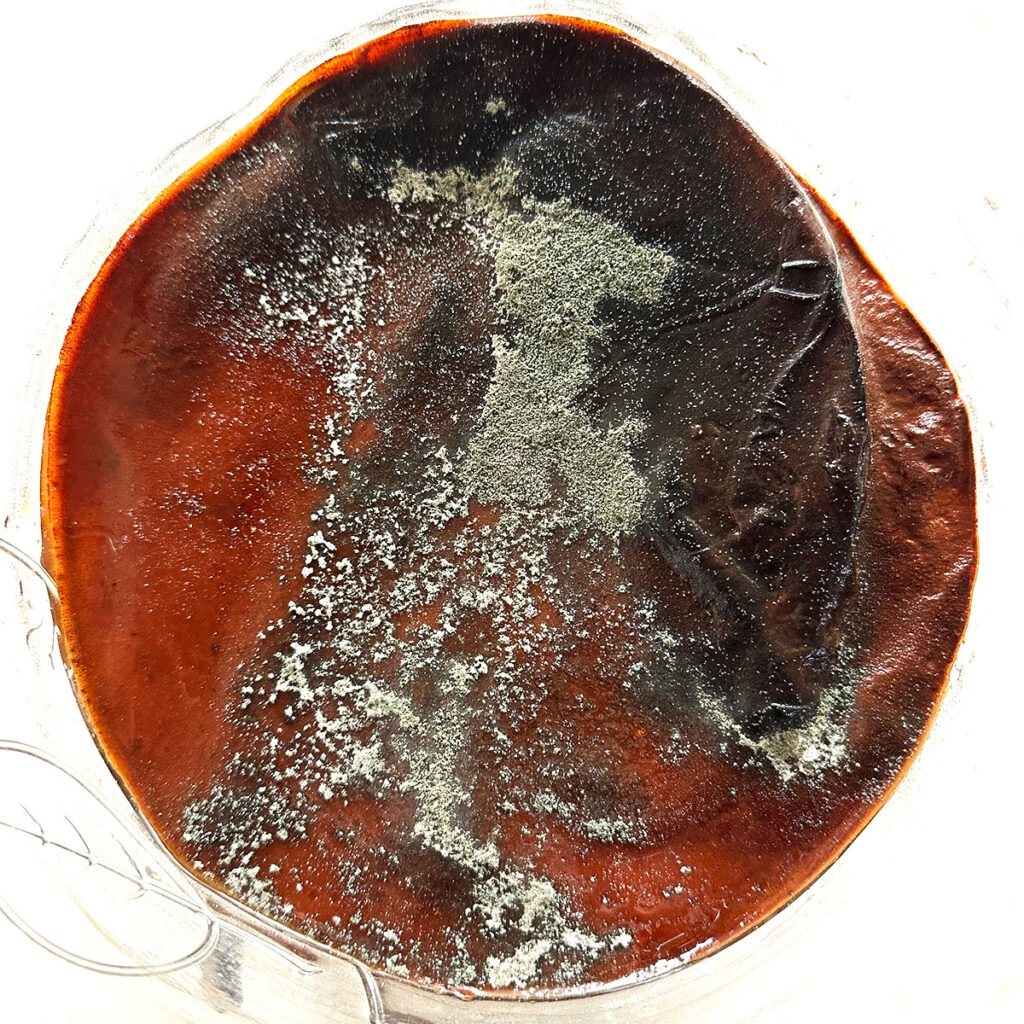
How to prevent mold in your kombucha
If you got mold, it’s because something went wrong in the process of brewing. Here are a few common reasons you may have got mold:
Not enough starter: If you didn’t use enough starter kombucha, or the starter wasn’t strong, the kombucha may not have been acidic enough to defend itself from mold strains. You can use pH test strips to ensure your starter kombucha is strong and acidic (should be between 2.5 and 3.5).
Temperature too low: If the temperature is too low where you’re brewing, or if you put your first fermentation / SCOBY in the fridge, the bacteria and yeast go dormant. This means they can’t acidify your kombucha, and mold may grow. Never store your SCOBY in the fridge, and ensure you store your kombucha somewhere warm enough to prevent mold.
Supplies not clean enough: Mold spores may have slipped in through your supplies, such as if you used a dirty sponge to clean the jar. Learn to clean your supplies to prevent contamination.
Used the wrong ingredients: Herbal teas and different sugars can weaken the SCOBY over time. Be sure you’re using the best teas and best sugars for kombucha.
Wrong place: Where your fermentation station is located matters! Airborne contaminants from garbage, compost, fruit bowls, or even other fermentation projects (like kefir or kimchi) can contaminate your kombucha. Ensure your kombucha is stored away from these.
What if I’m not sure?
The thing is, kombucha looks weird even under normal circumstance. So what if you’re not sure?
Just give it a few days! If it’s mold, it will grow to look like something in the photos above. If it doesn’t grow, it’s probably just normal, weird kombucha stuff.
Here are some examples of normal kombucha SCOBYs for your reference. Not sure if yours is moldy or not? Feel free to ask in our Facebook group!
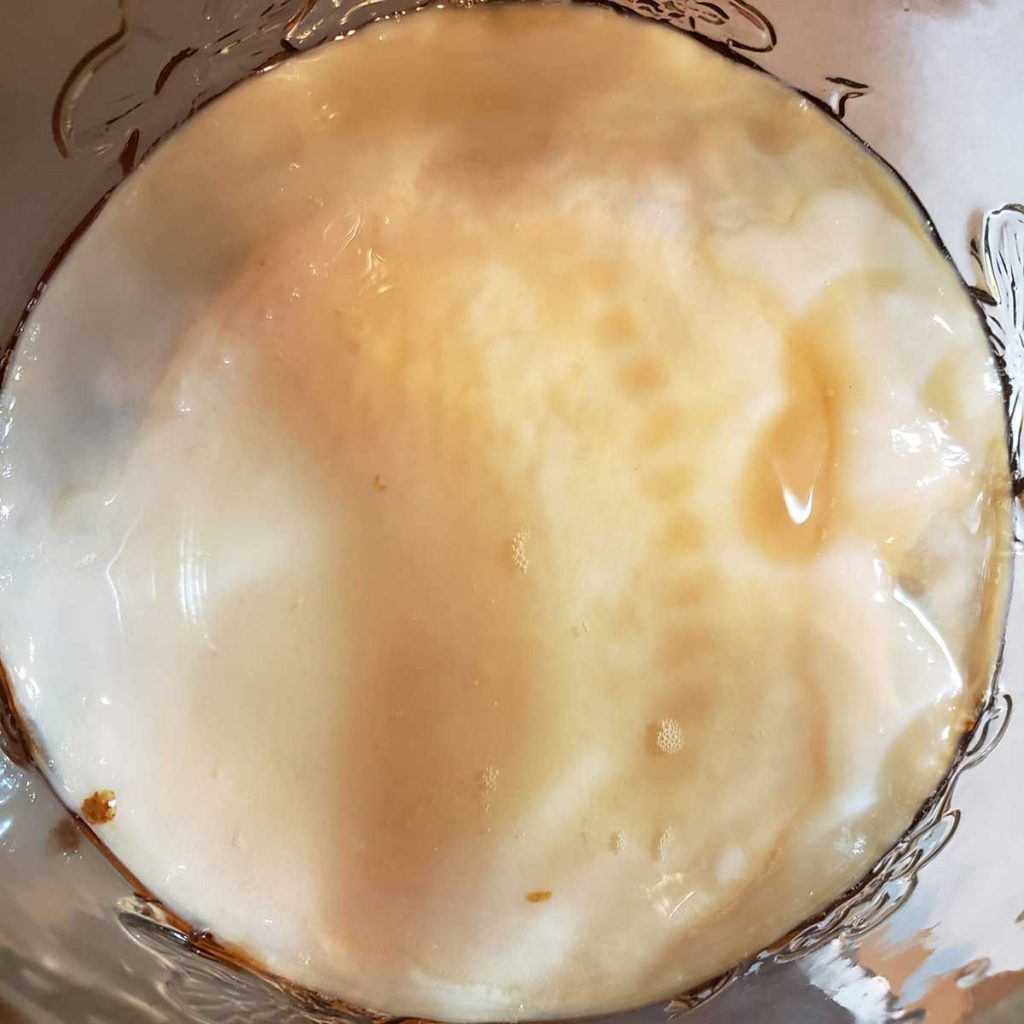
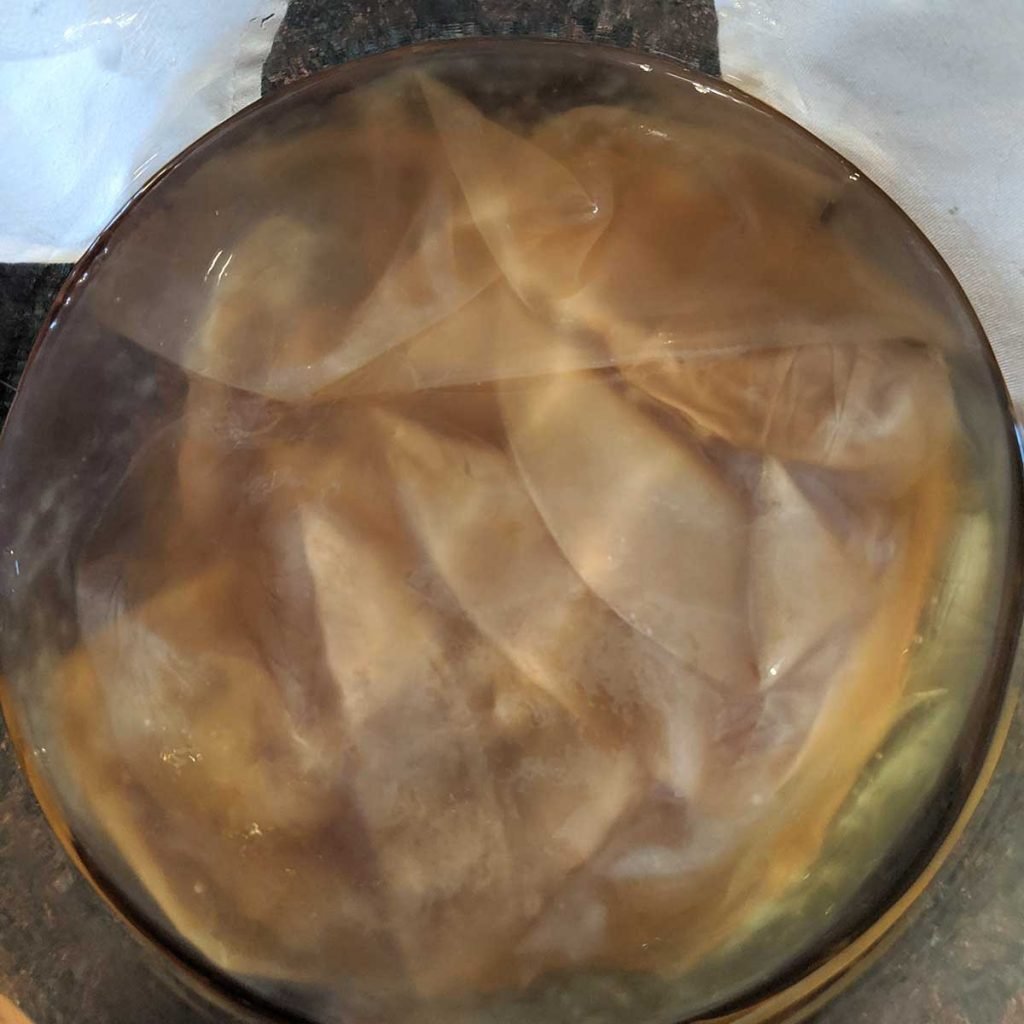
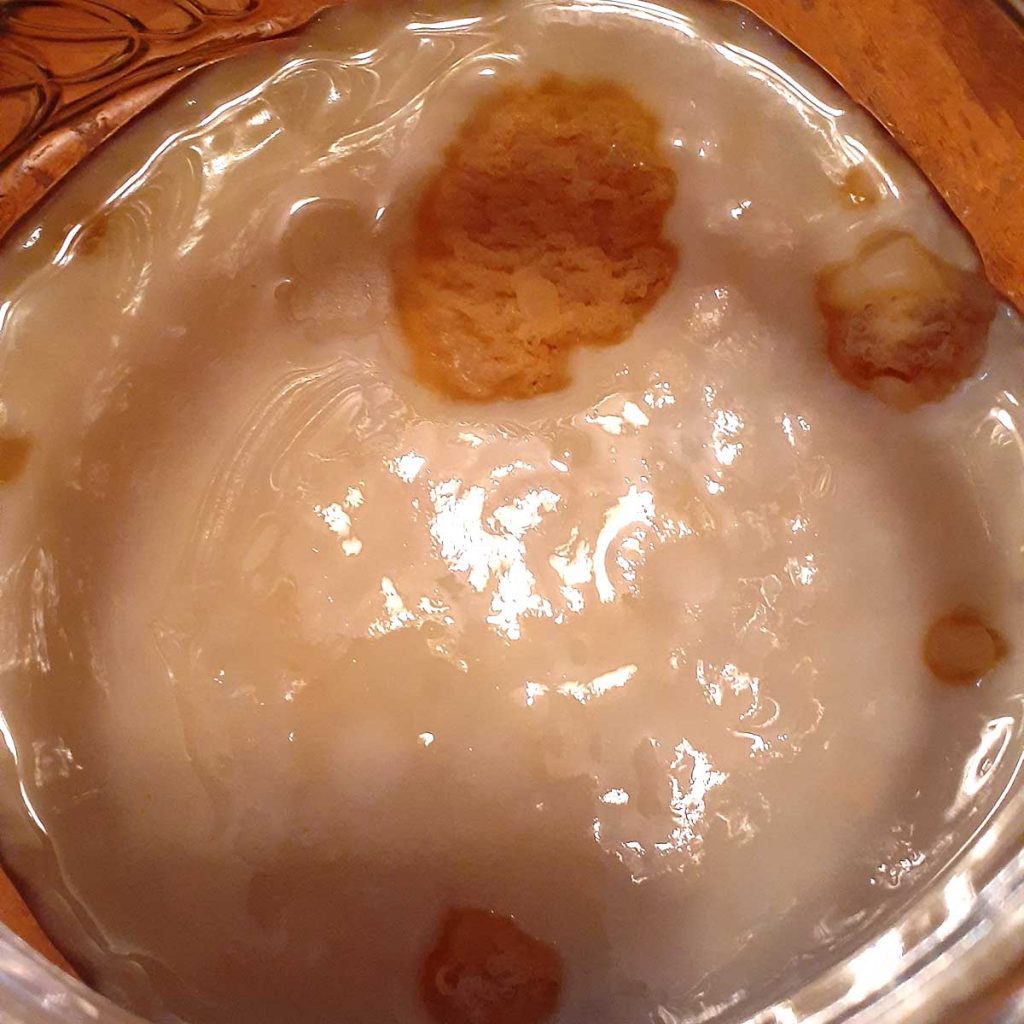
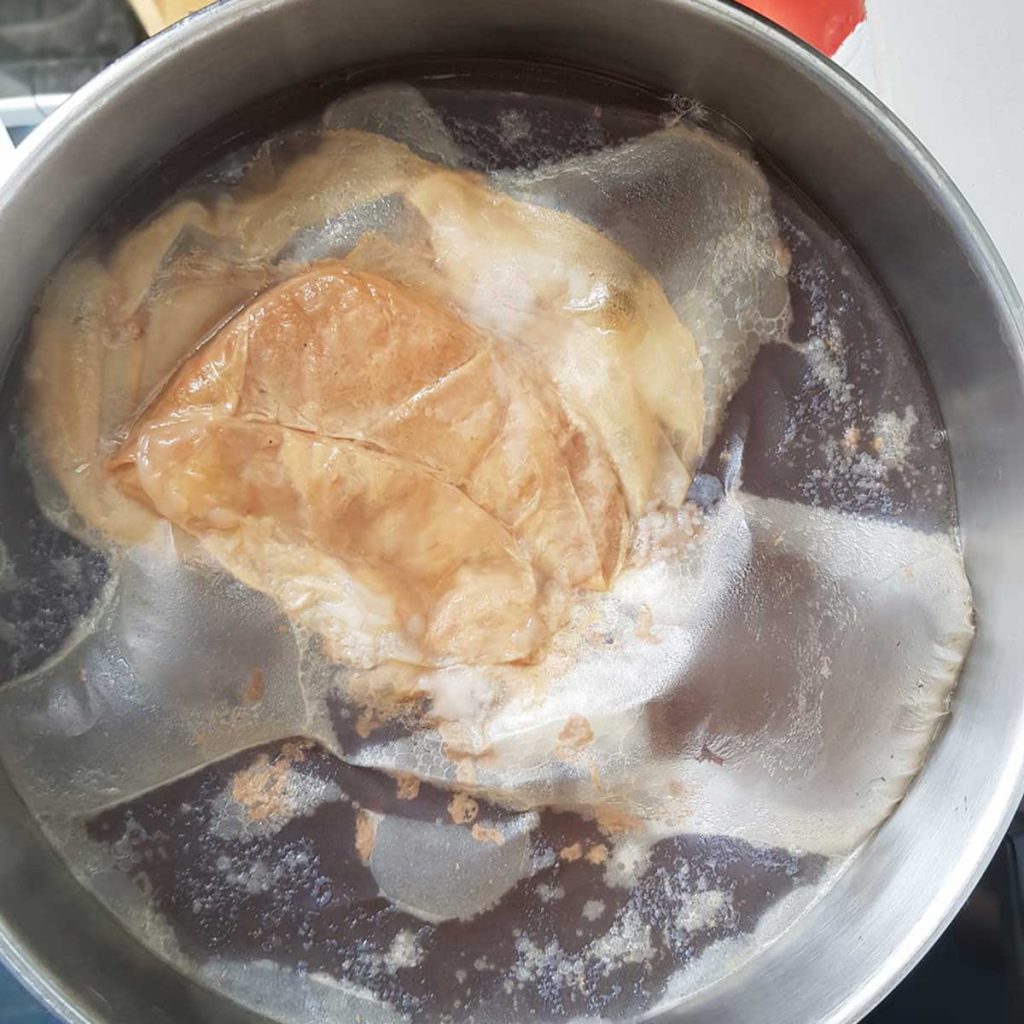
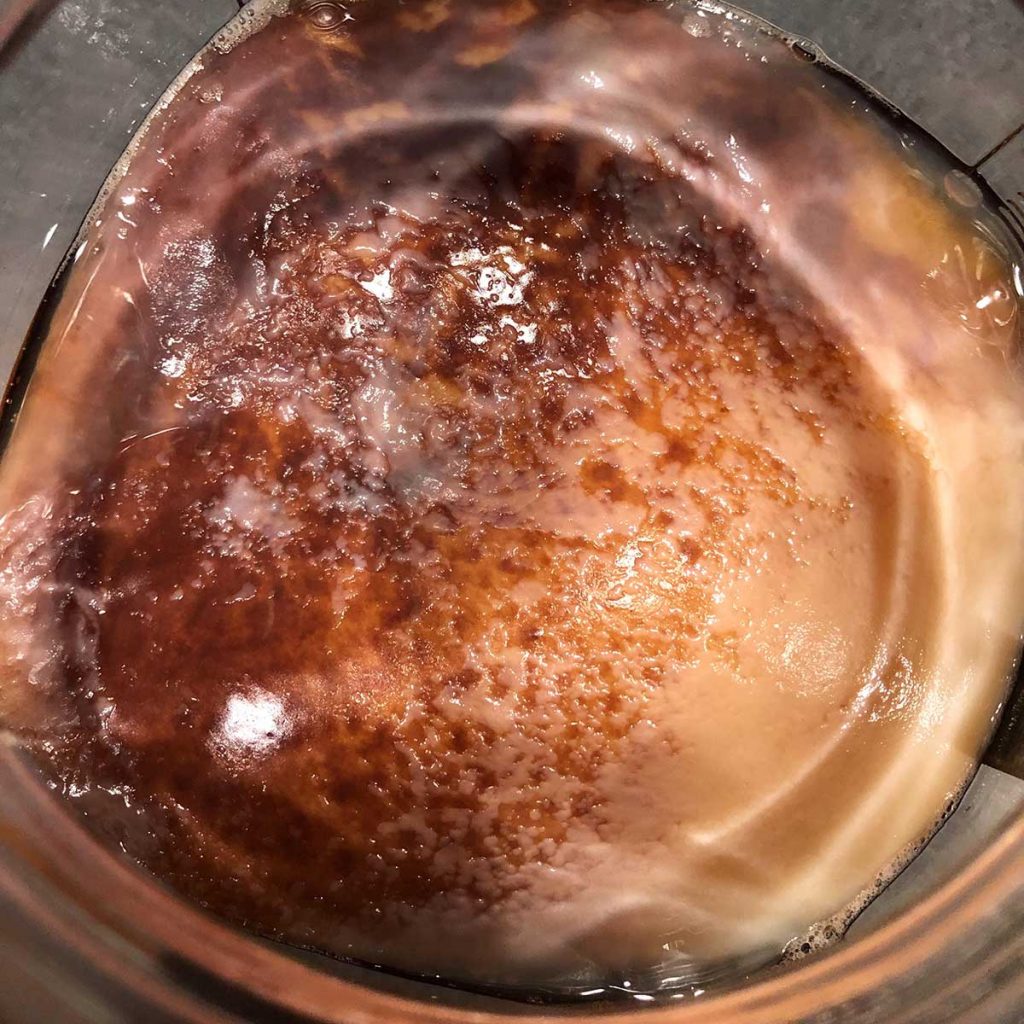
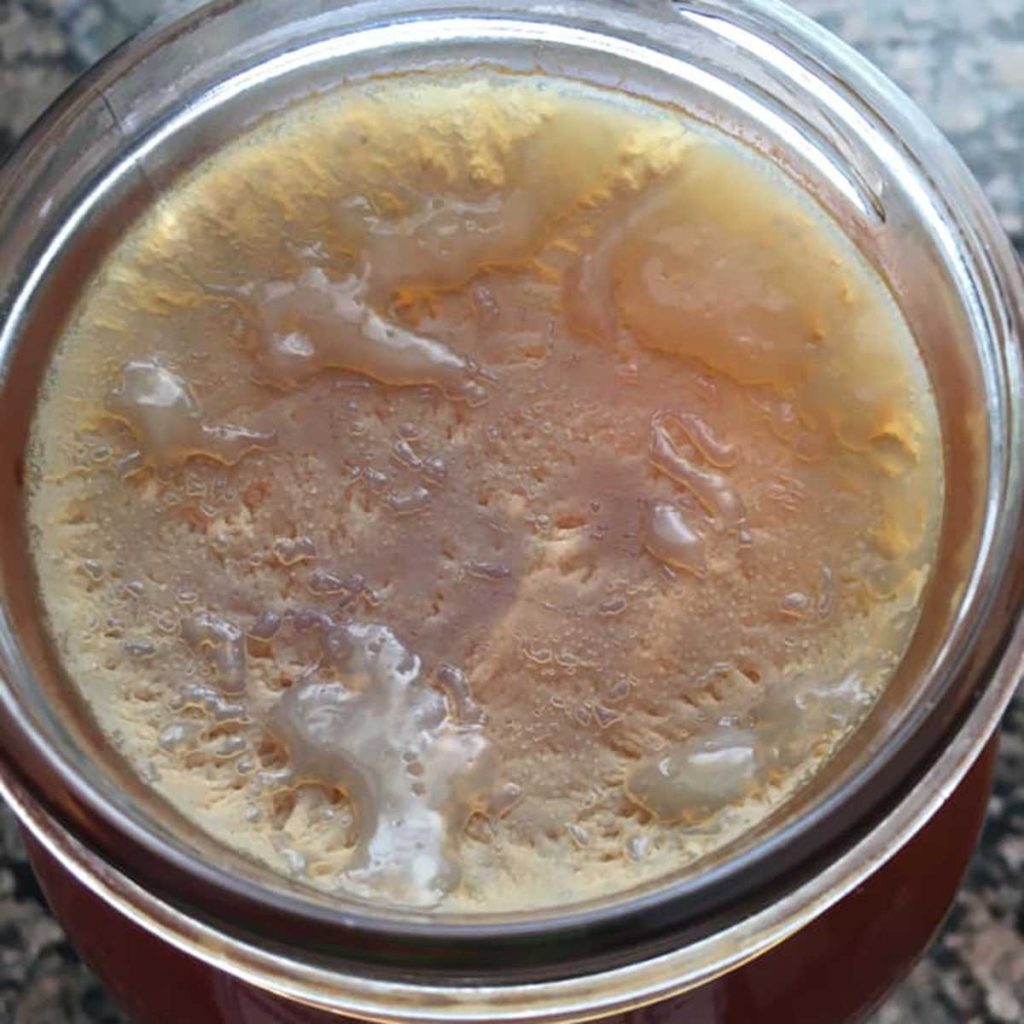
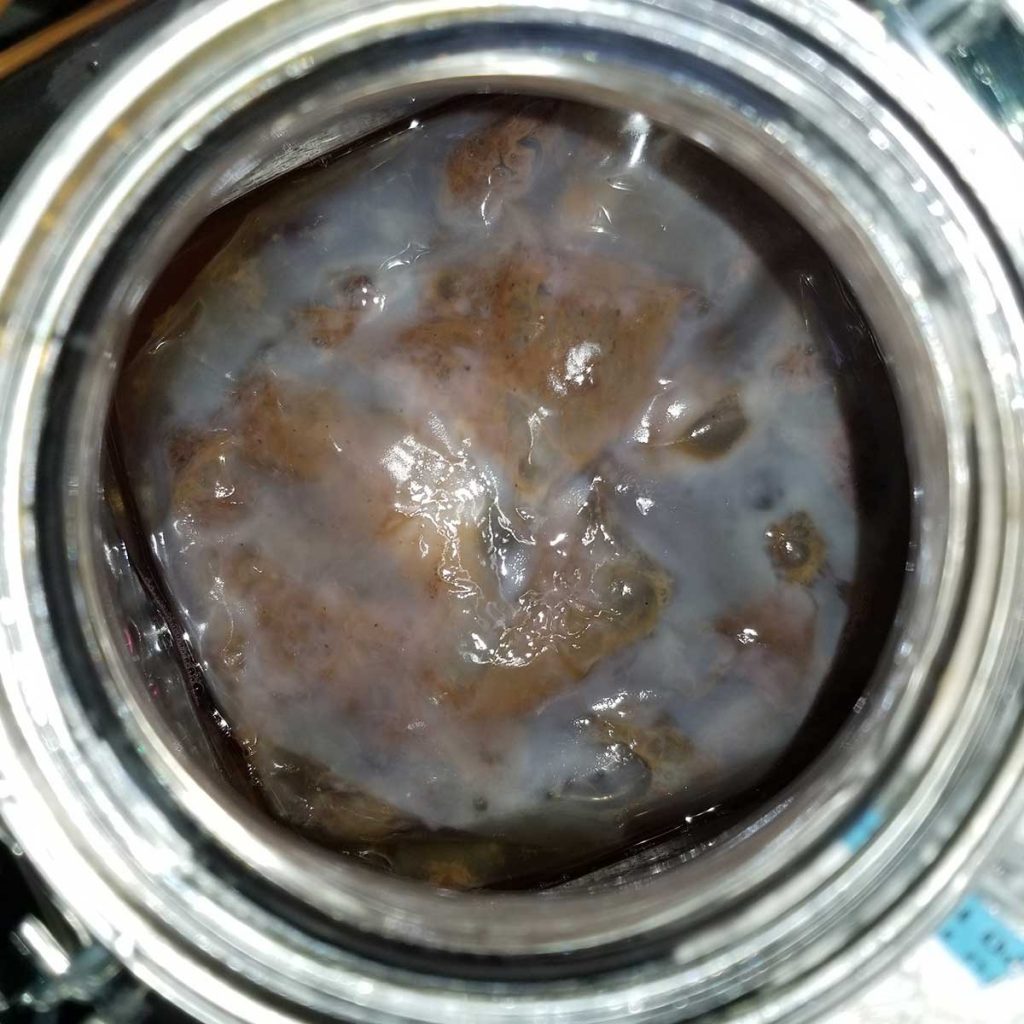
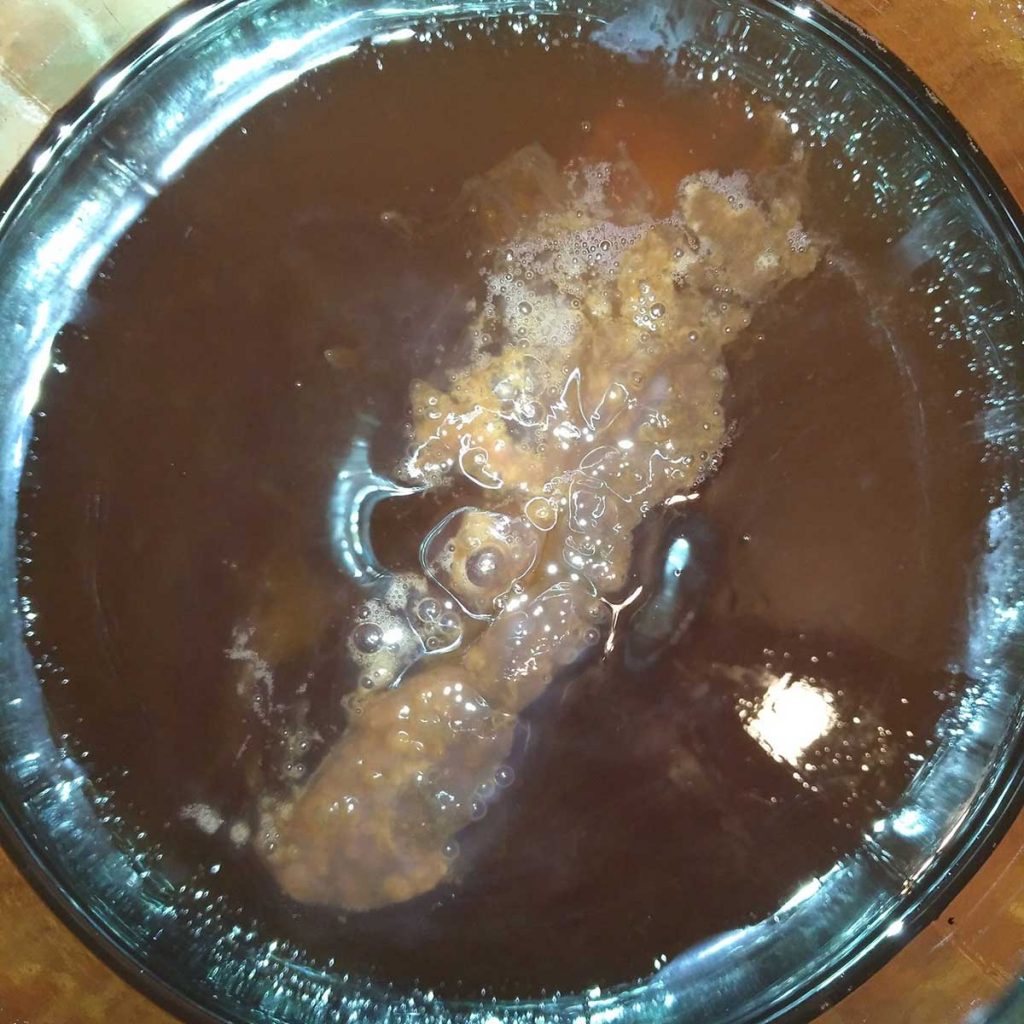
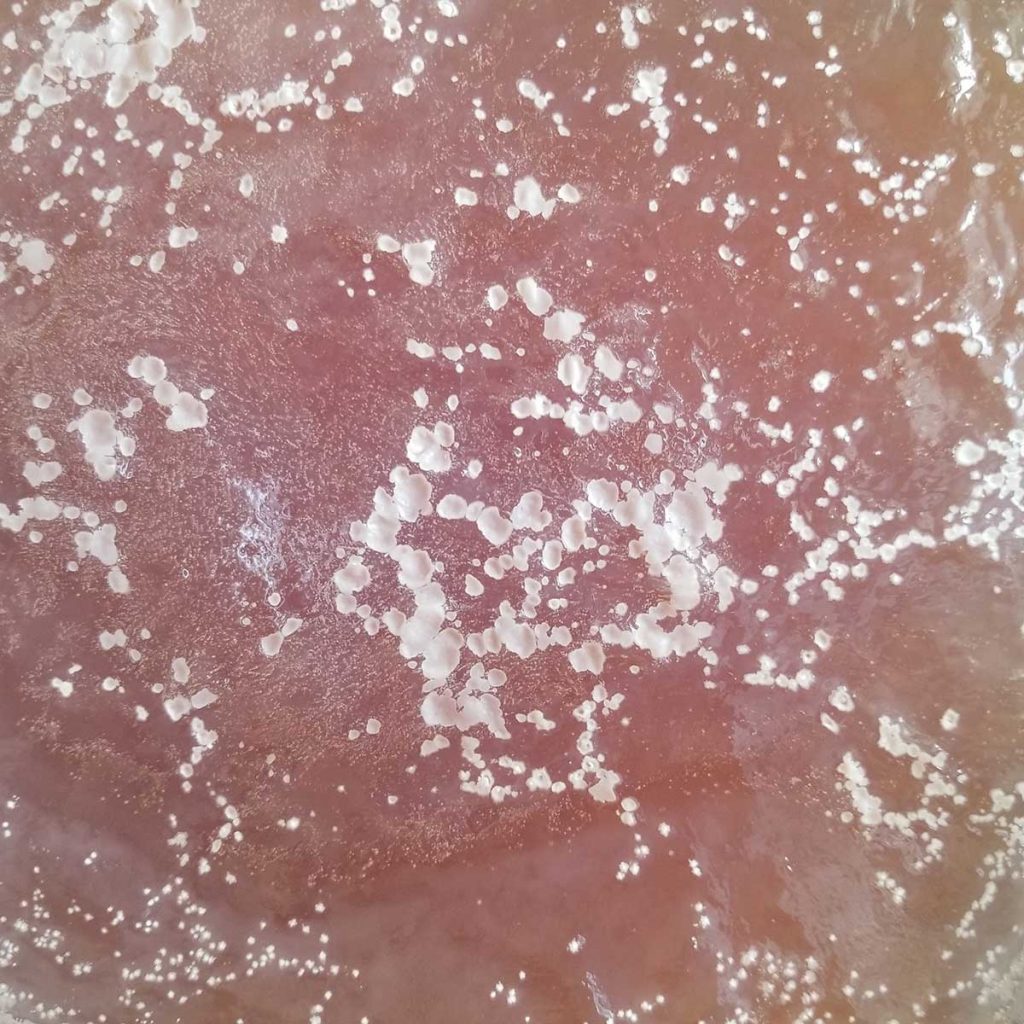
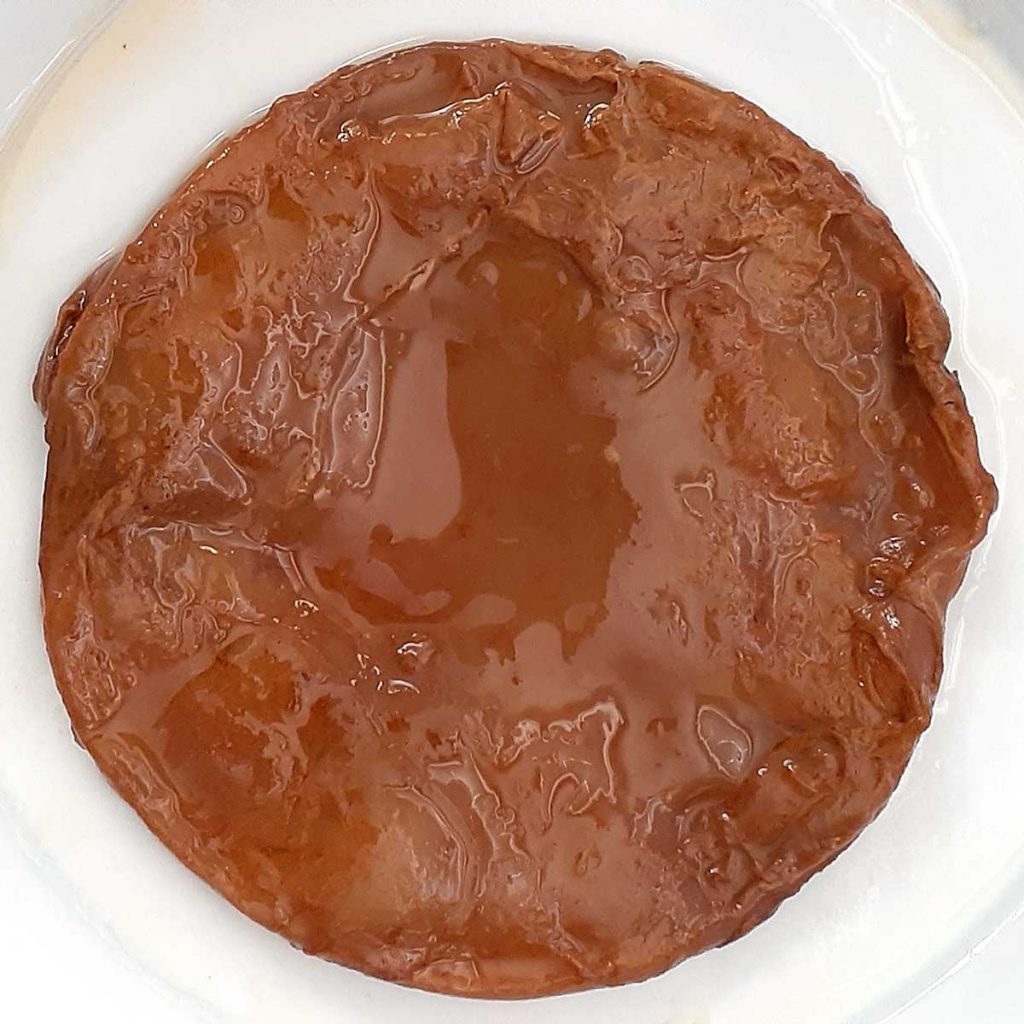
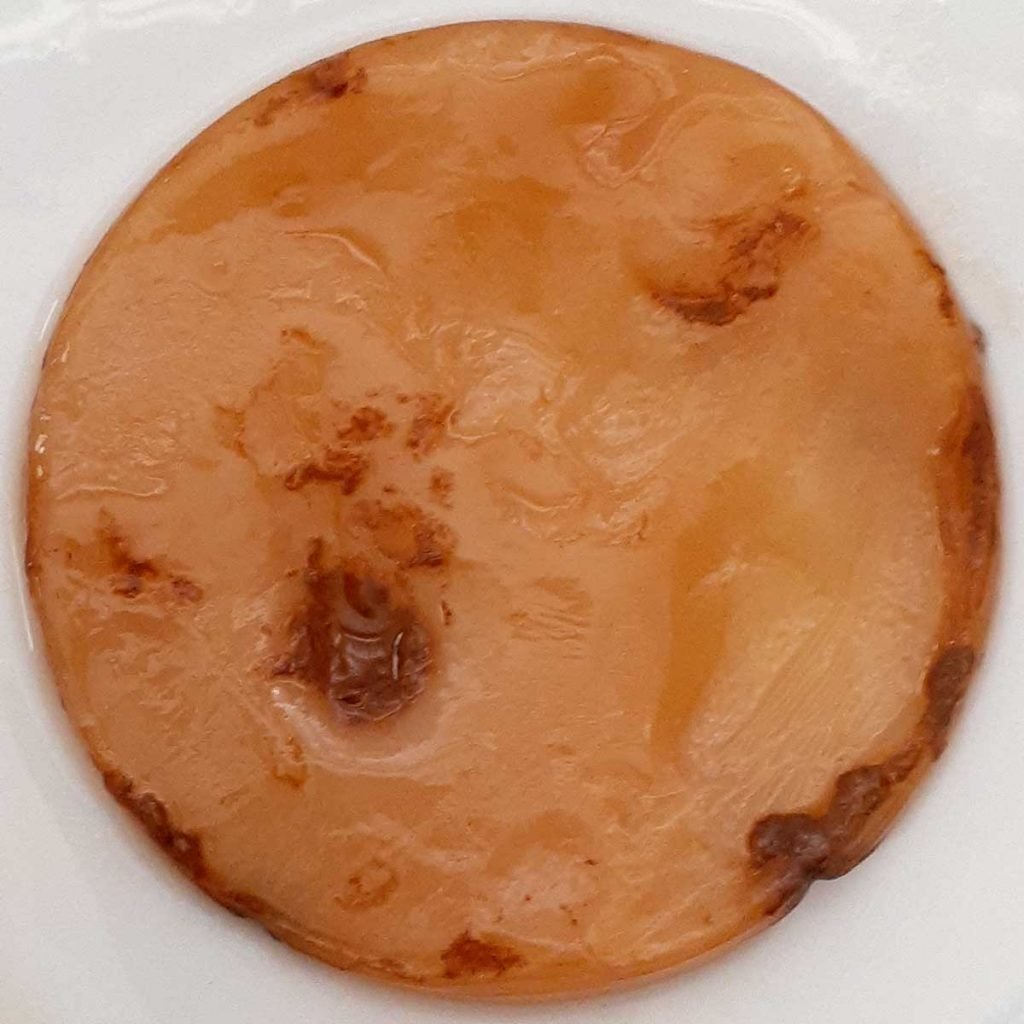
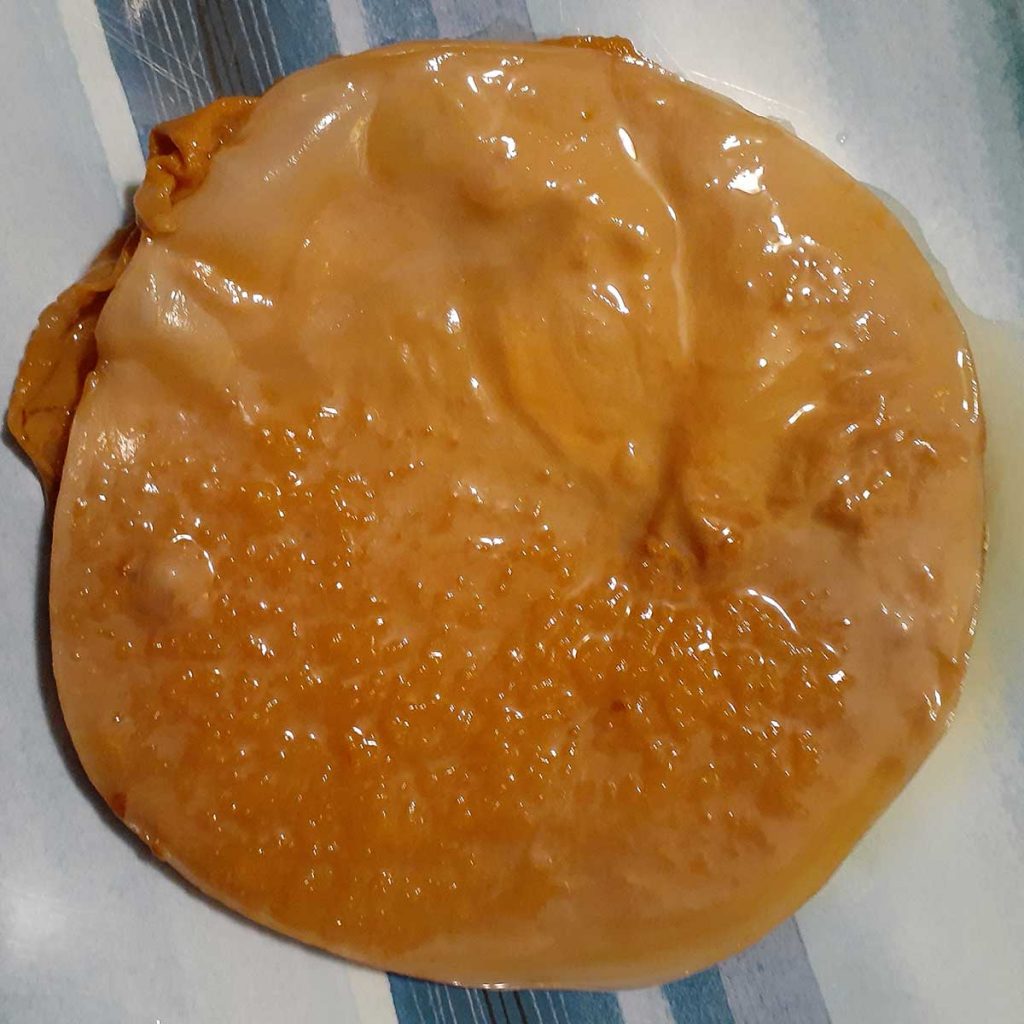
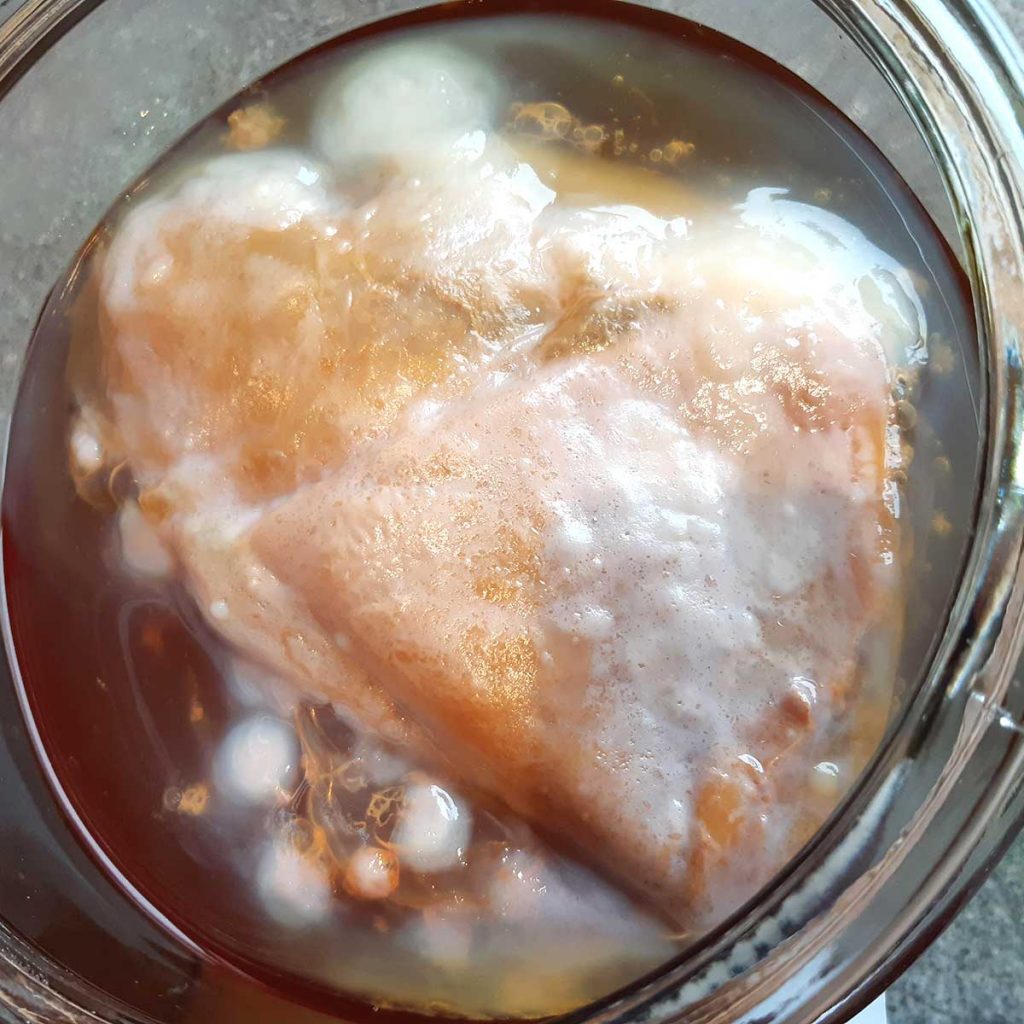
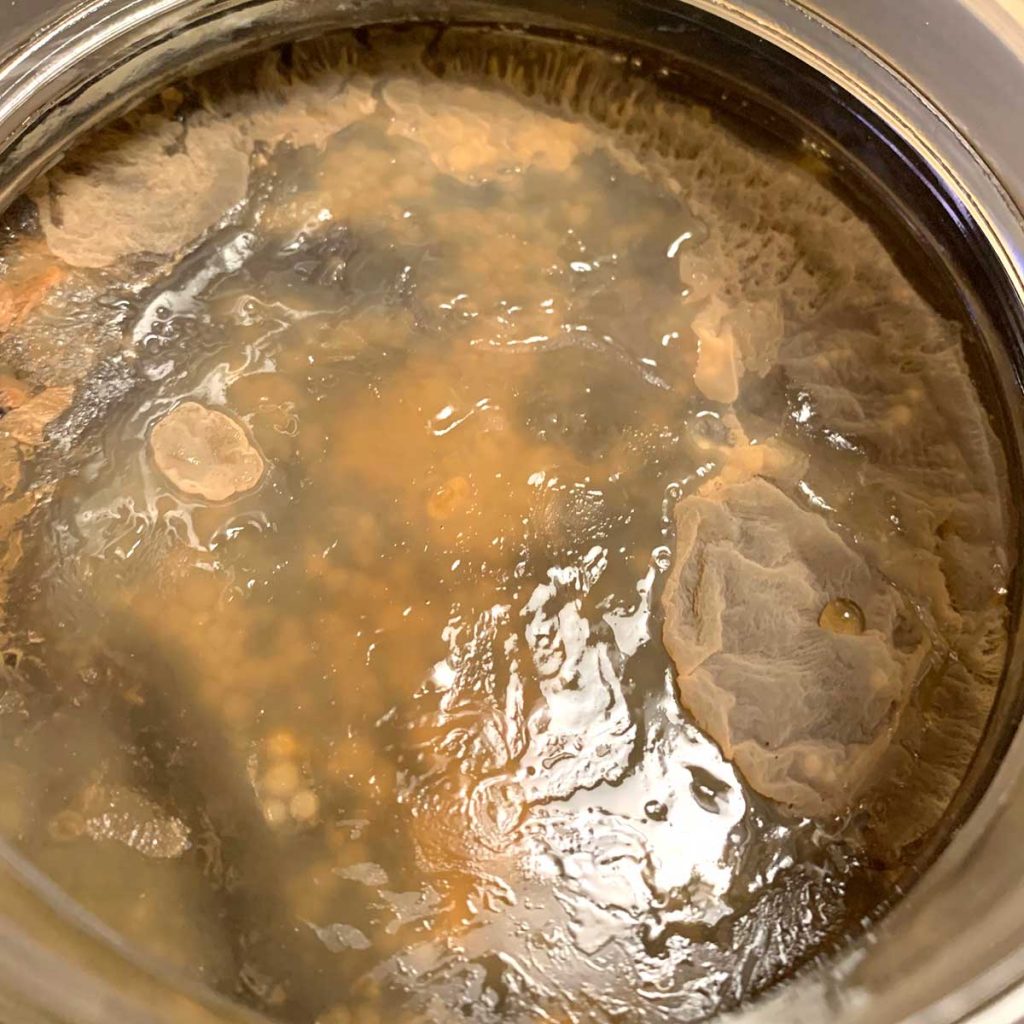
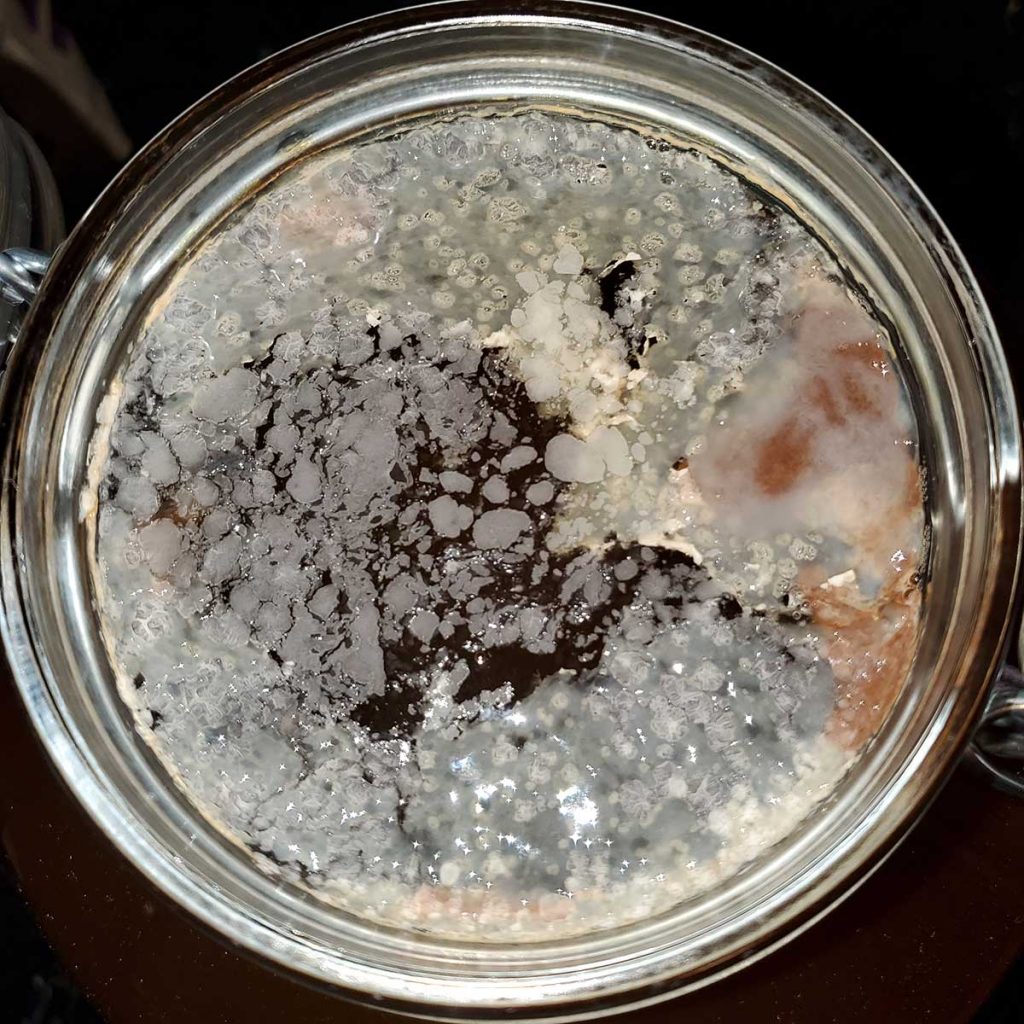
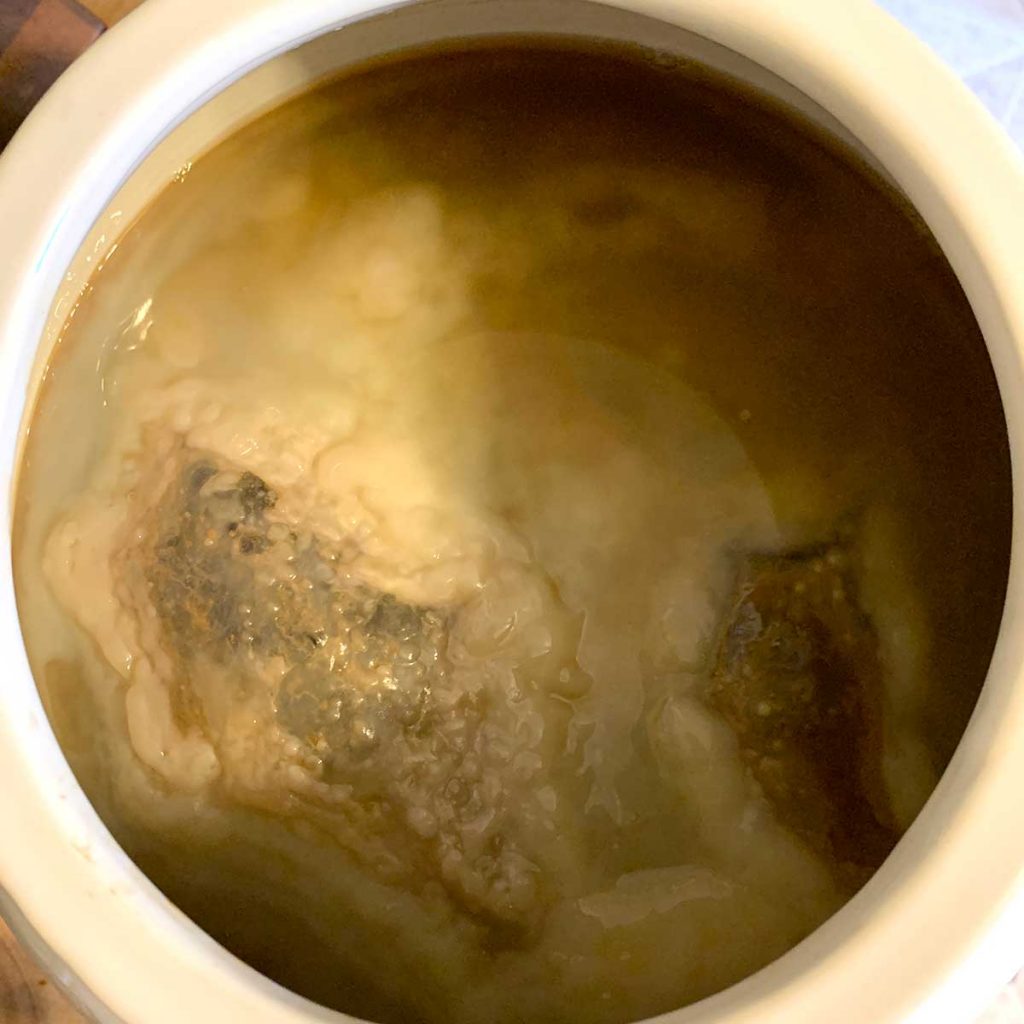
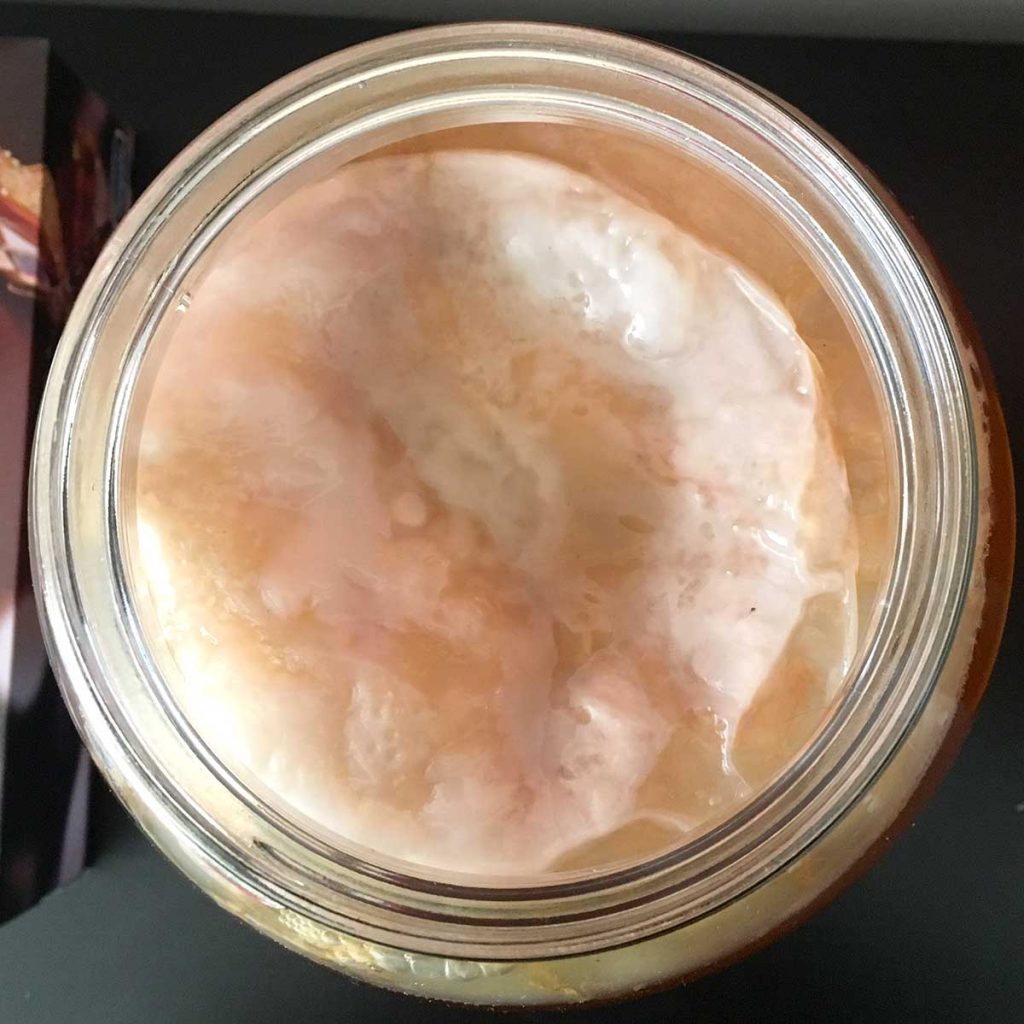
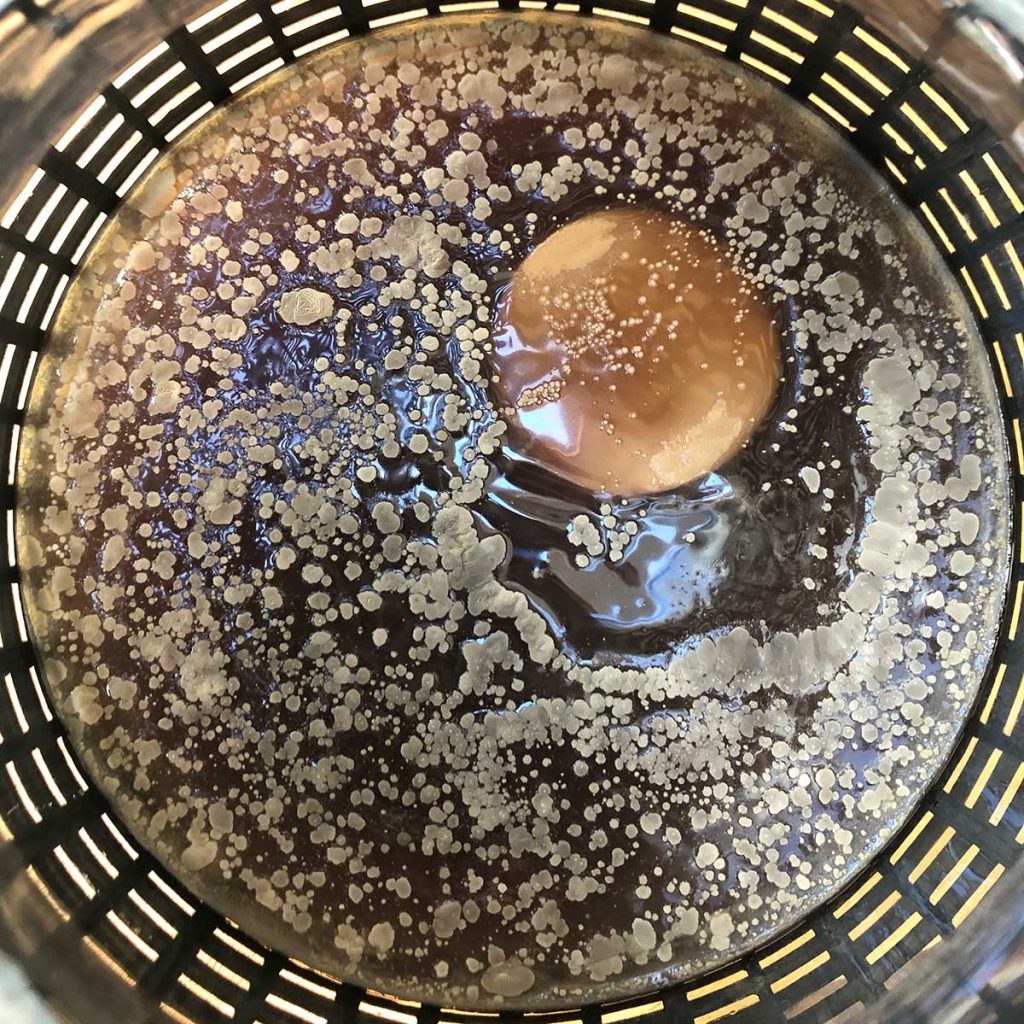
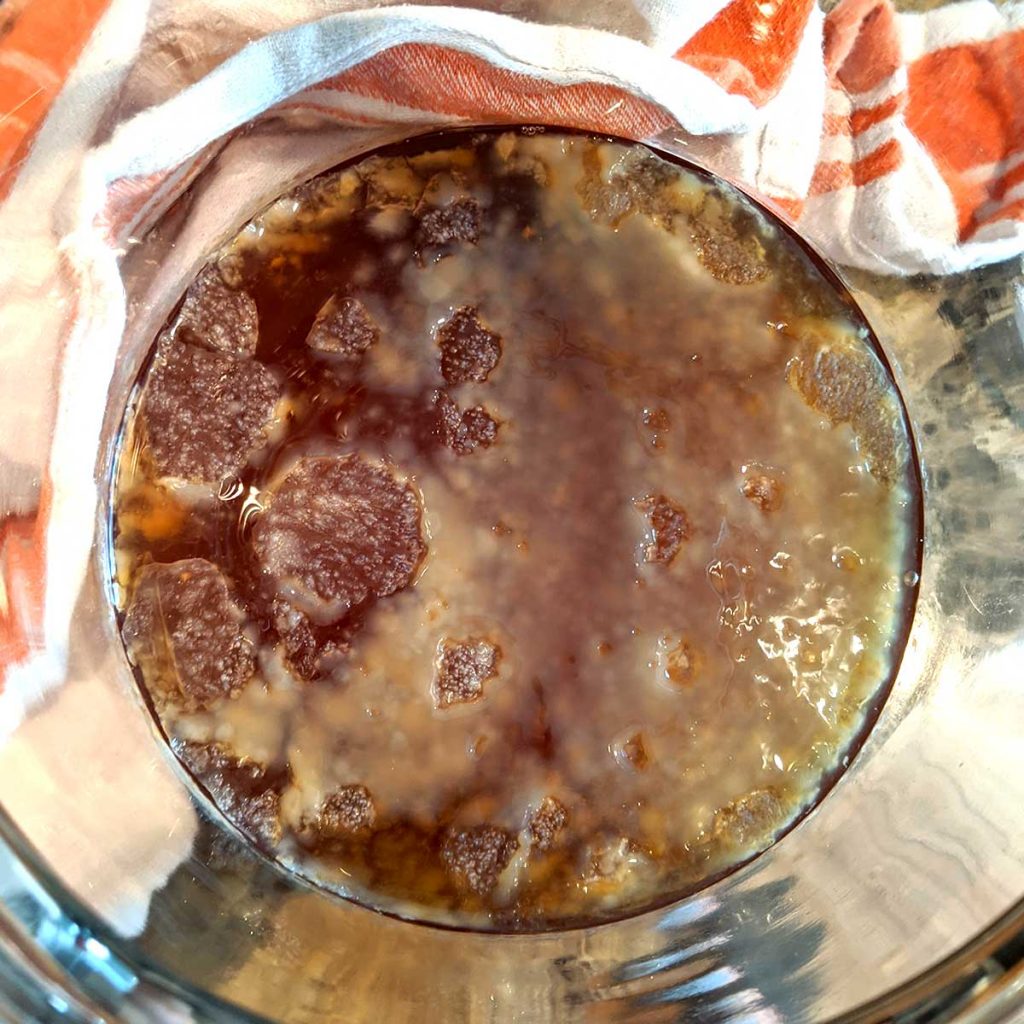
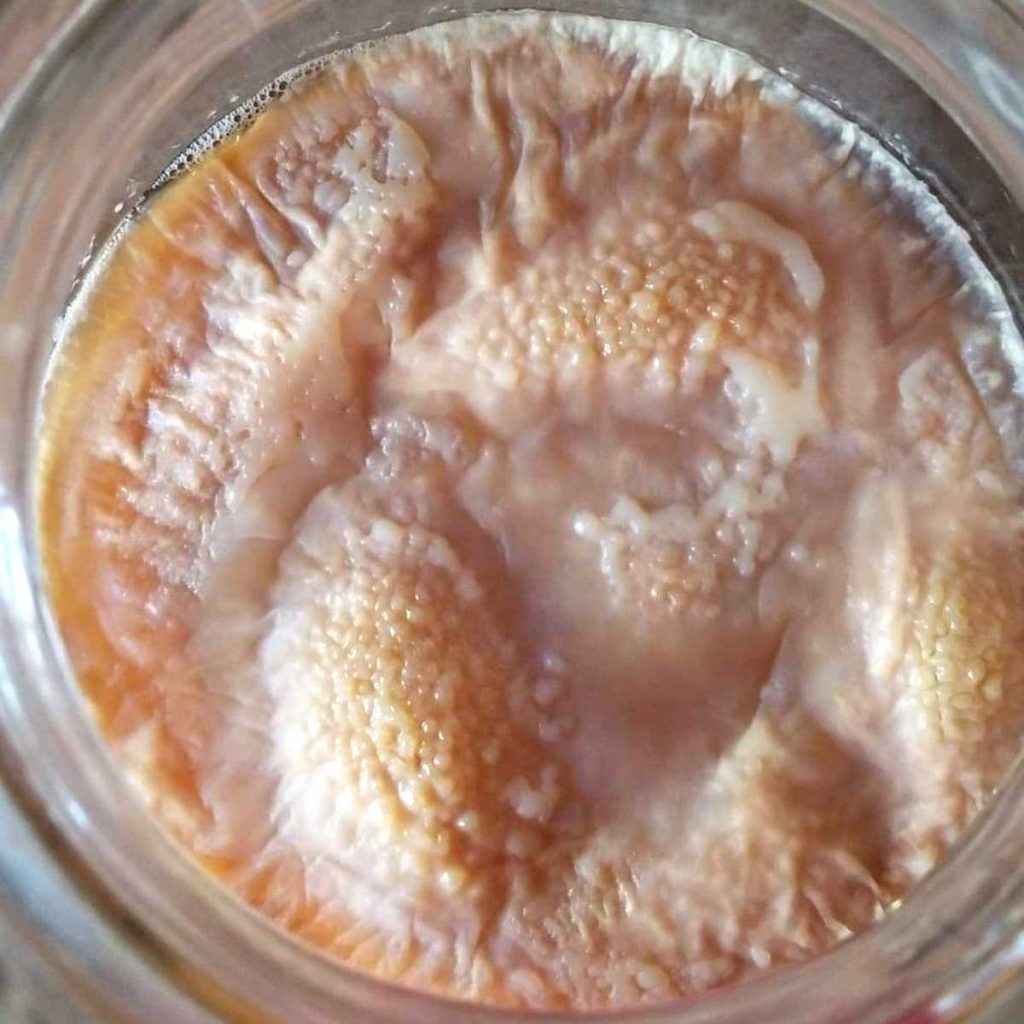
You got mold, now what?
First off, my condolences. Now it’s time to make your peace and throw it all away. The SCOBY, the tea, everything. There may be microscopic mold spores that you can’t see in the kombucha, so you’ll need to toss out the whole batch.
Next step, sterilize everything very well using boiling water and distilled white vinegar. (Here’s how I sterilize my kombucha supplies).
Finally, learn from your mistakes and move on. Figure out where you may have gone wrong so you can prevent mold from ever happening again. Can’t figure out what went wrong? Read the kombucha master recipe again closely in case you missed something. And feel free to email me with your questions!


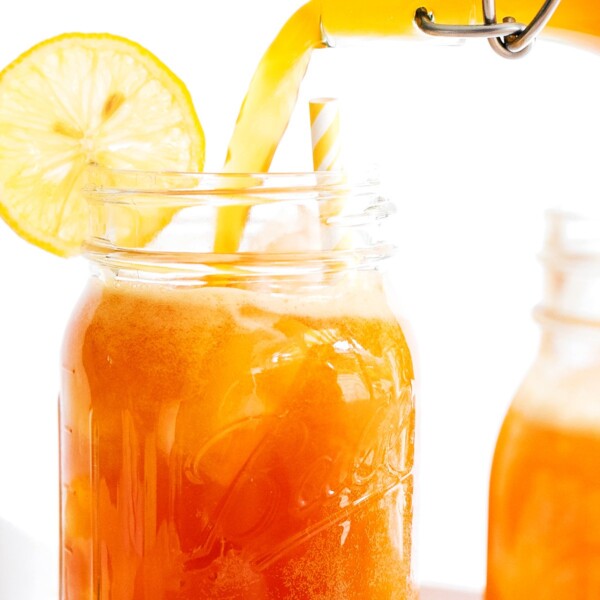
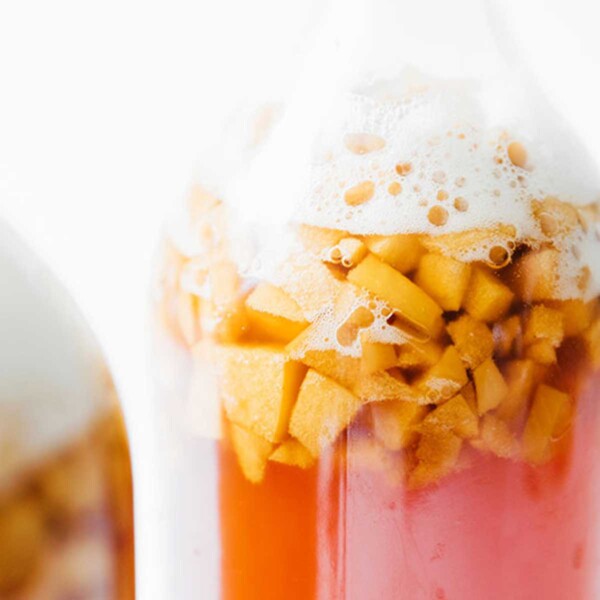
I’m having a hard time trying to figure out if I have mold or not for sure! Is it possible I can send a photo to get a second opinion before I throw it all away?
Sure! You could also post a photo in our kombucha Facebook group to get more opinions.
Hi there – thanks for all the advice in your articles! Really helpful. When I took off the cheesecloth from my scoby jar, there were several fruit flies in it – do I need to throw everything away and start again? (Fingers crossed not!) Thanks Fiona
You might not have to! Here’s our article about fruit flies in kombucha.
Hi Sarah,
I’ve learned a lot from your website. Thank you so much for sharing your knowledge. As a first time kombucha brewer, I tried to join the facebook group about four days ago, and been waiting. Went back there today and it looks like the ‘join’ button was active again like I had never clicked it. Unsure but wondering, the question it asks for admin approval is whether I want to sign up through email for some tutorials. I opted to say no thanks instead of entering an email. Is this why I was denied? I again just requested to join and put in a fake email address. If it’s mandatory, then it should just say it’s required, that would be fine, but since they ask if I wanted to, I answered honestly. Anyway, would you be able to smooth my approval if you’re an admin there? I’d certainly appreciate it.
Hey Michael!I just let you in. Happy brewing!
Hi! I’ve been making kombucha for a few years now, and suddenly I have a problem I’ve never seen before – mold in the second bottling! I am very careful to keep things sterile, and normally I just chop up whatever – washed – fruit I’m using, and pop it into the bottles, along with a little sugar and the new kombucha. Last time, I decided to try pureeing the fruit first. It worked out ok but seemed like a lot of extra work for similar results so this time I just did my usual chopped fruit method. Now the fruit is all floating at the top, looking dodgy, and in one bottle…. The portions of fruit that are on-top are… Black! Obviously this will be disposed of, but… Whyyyyyy???? And is the entire batch doomed? 🙁
So strange! Is there a chance the fruit was moldy? That’s the only thing I can think of (besides the bottle being moldy)?
Hi Sarah, a couple of the normal scobies pictured look like they have small amounts of kahm yeast. (Dry, white/clear or tan layer on top of pellicle.) Is that in fact kahm yeast, and if so how does one deal with it? I just made a scoby and a ton of that stuff appeared… Thank you!
I need to research and write an article about this! I think I would probably rinse it off and add some store bought unflavored kombucha to bring in a better balance of yeast.
Hello Sarah, two weeks ago I saw spots on my bucha that I was pretty sure were mold. I put it on my I’ll deal with you soon list, but when I went back to it the scoby looked heathy. Does this mean I was mistaken, or could the culture have grown over the mold and its still contaminated?
If the spots are gone then it likely wasn’t even mold in the first place! 😀
I also tried making kombucha scoby for which I didn’t have any starter tea so I used apple cider vinegar. And the jar is off 1000ml. After trying it for twice i failed….as molds began to grow. Please help me so that I can successfully complete my project
I think the issue is that you’re not using starter tea to begin. It really needs that (otherwise you’re just making vinegar, not kombucha – it needs the right inoculation of bacteria and yeast to kick it off!) Here are some tips for where to find store bought kombucha.
Hi Sarah, if my kombucha top scooby has few small fish spots on top. It must be trown. But what about my second scooby in the same batch can it be used that is at the bottom of the brew? Thank you
You’ll need to throw away everything that was in that jar, all SCOBYs and liquid included. Sorry about that!
Hi! I came back from a longer than planned vacation and I had a beautiful new scoby forming on top with my mother sitting at the bottom when I left. I fed it some sweet tea but no vinegar and left for 7 days. As I came back, I checked, and to my horror, what looked like mold to me, was sitting on top of the newly formed scoby. 2 White spots on my top layer. I figured I would just get a new mother from a neighboor and threw out the top layer, keeping the mother at the bottom and adding vinegar just for testing purposes. Now, I’m reading the Q&A and seeing that mold would grow back. I’ve since had two new healthy baby scobys in my brew. After 3 days I moved it and that baby went down with the mother and 48h later I have a new one forming on top. So I’m kind of thinking I may have overreacted, how would I know if mold was there in the first place ? If it were to grow back say.
I tried to include as many examples as I could of what mold looks like in this article, but feel free to post a photo in our Facebook group to get some feedback from other brewers!
It’s been 4 or 5 months since my last batch and the scoby on top of the pile that have grown has seriously black mold spots and white mold sticking to the sides of the jar. I’m a newbie in growing kombucha but made about 6 successful batches before.
I am presuming the top scoby should be discarded and the jar cleaned/sanitzed. But will all the other scoby’s underneath also need to be discarded or could they still be usable?
You should throw out everything in that jar – the mold probably gave off spores which will contaminate any other batch you put those SCOBYs in.